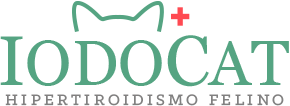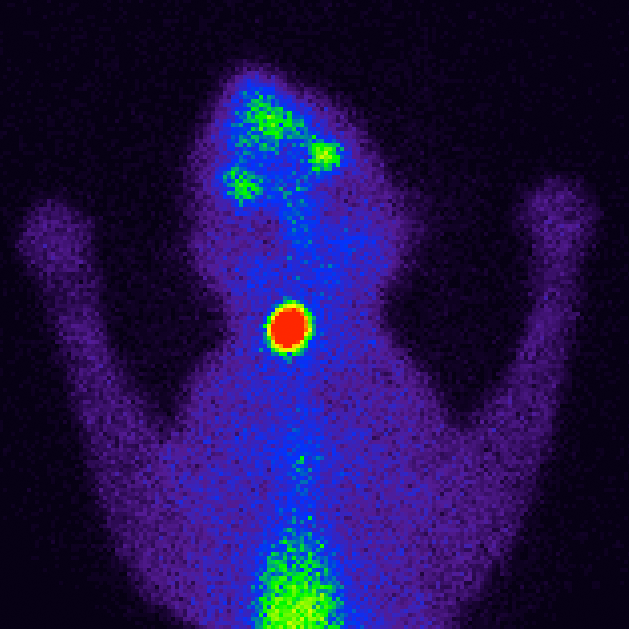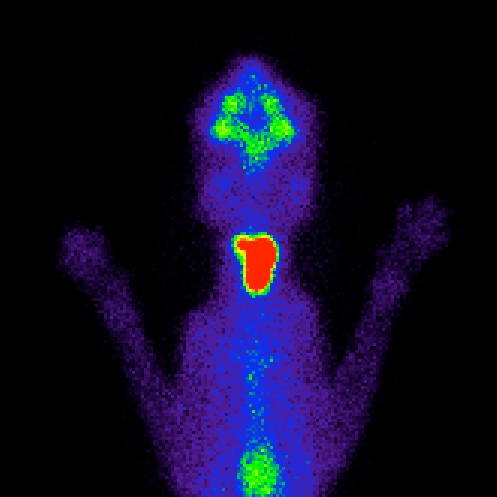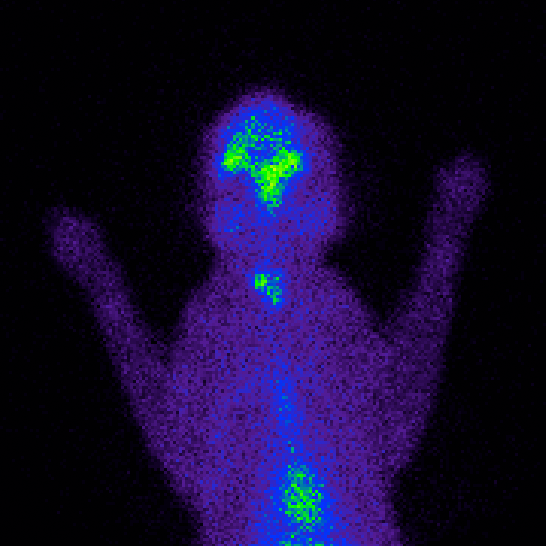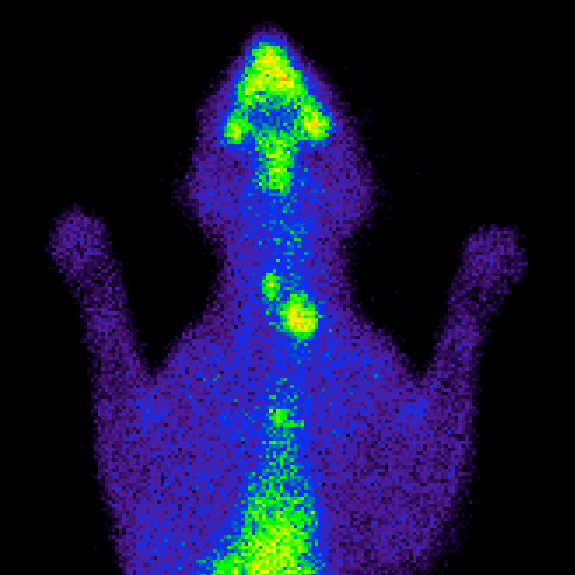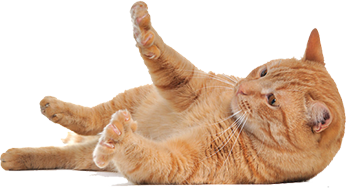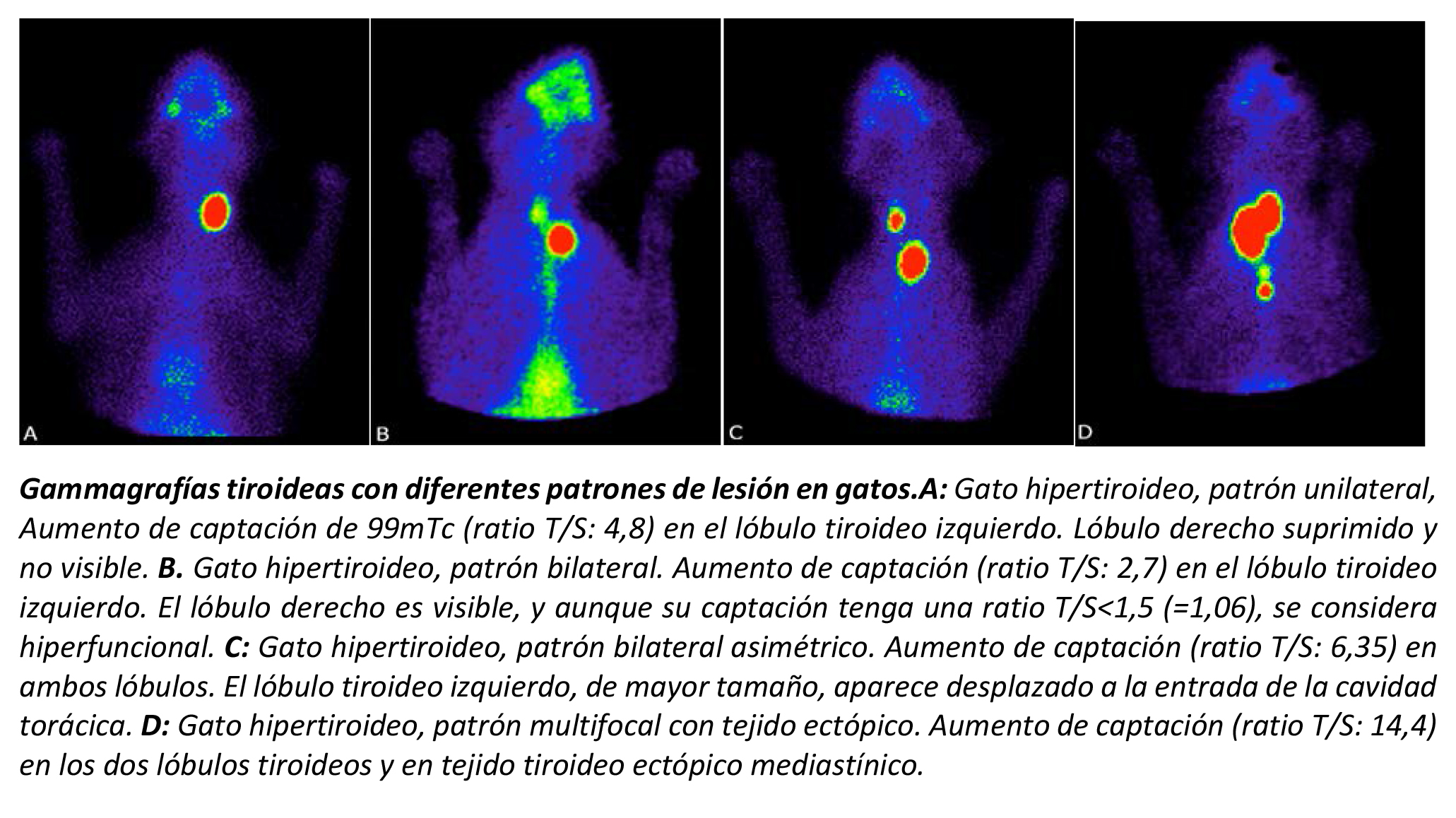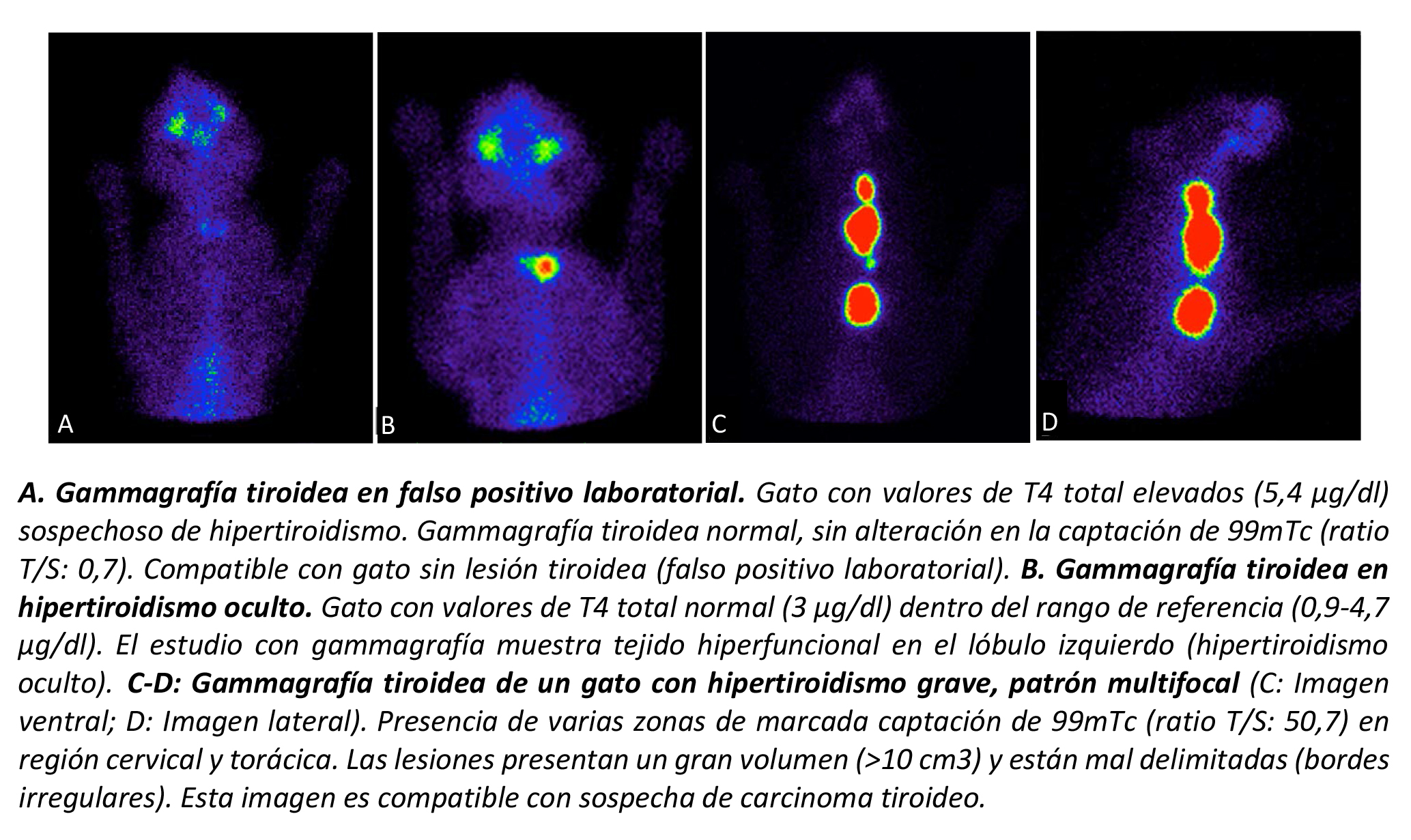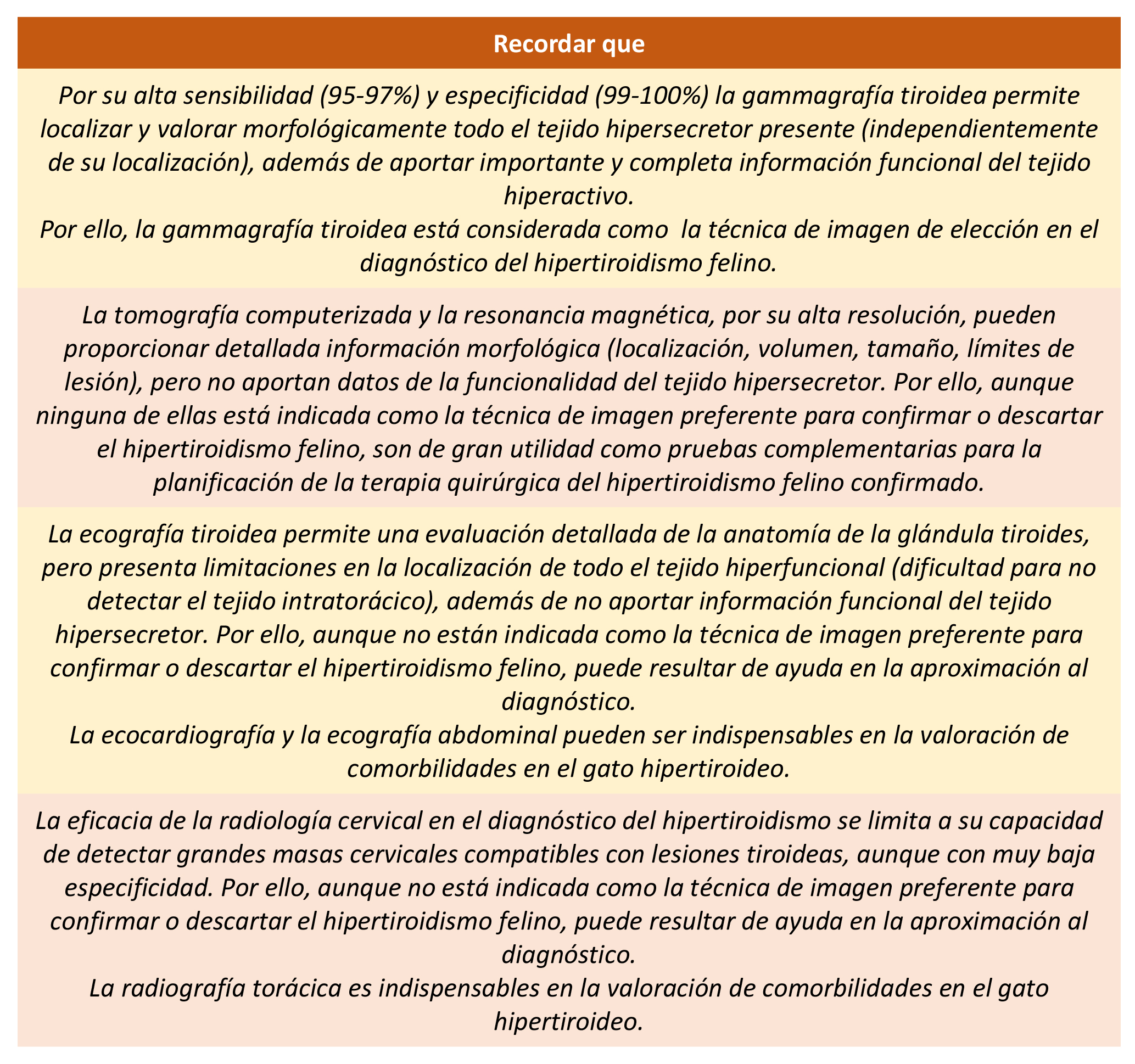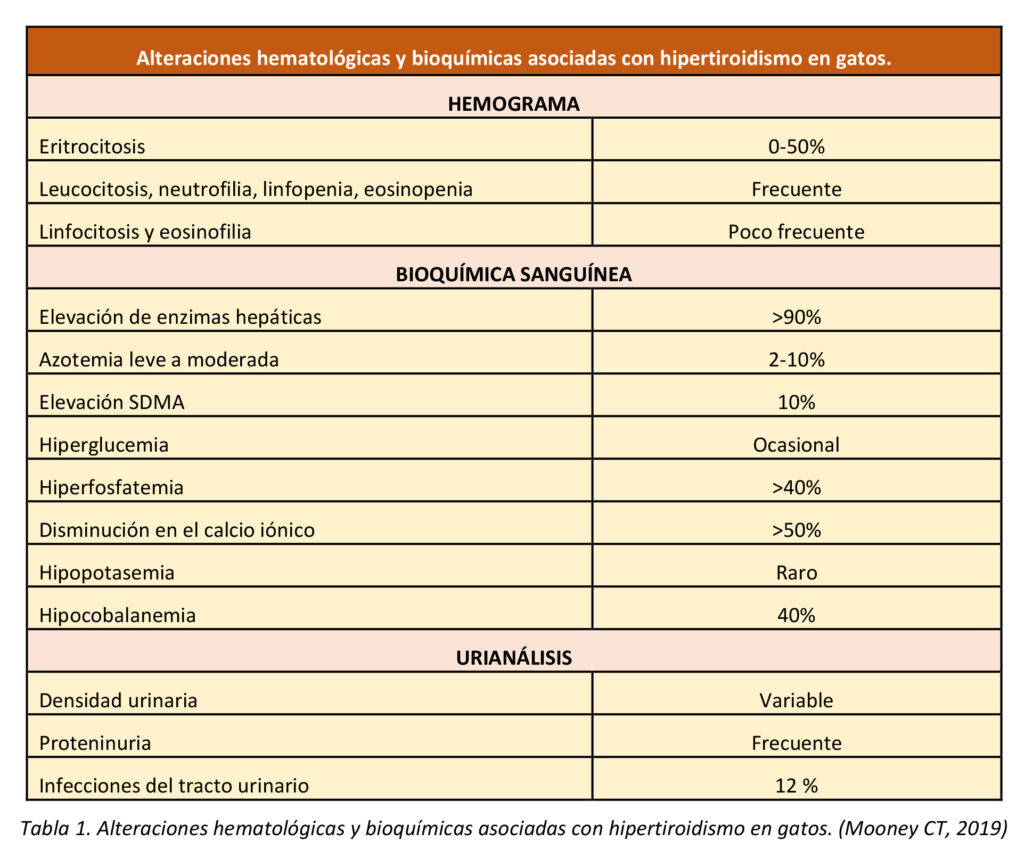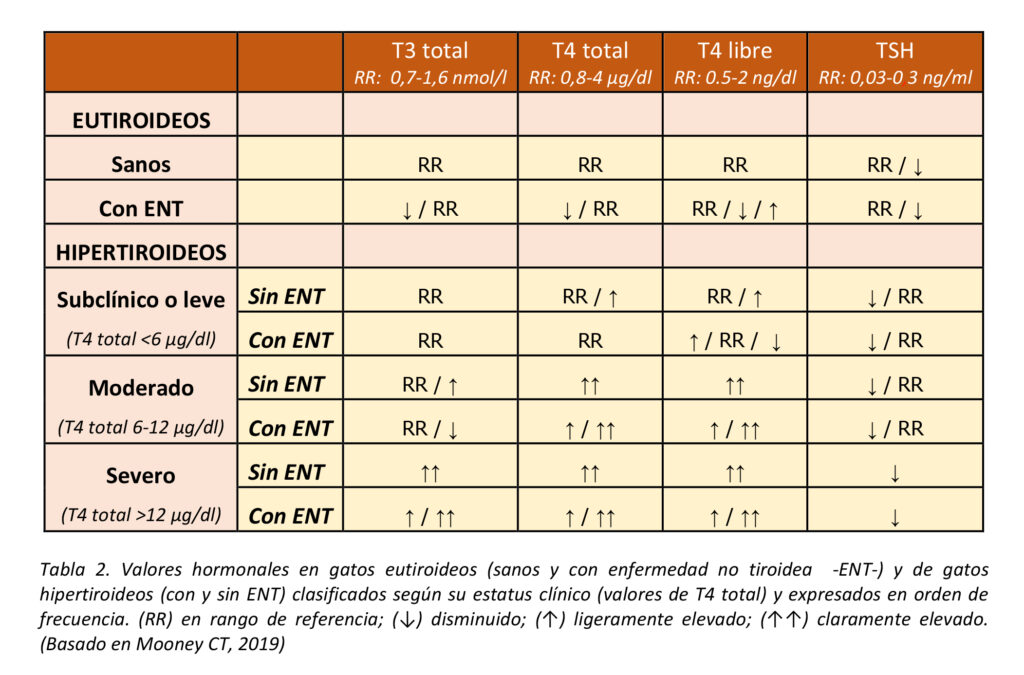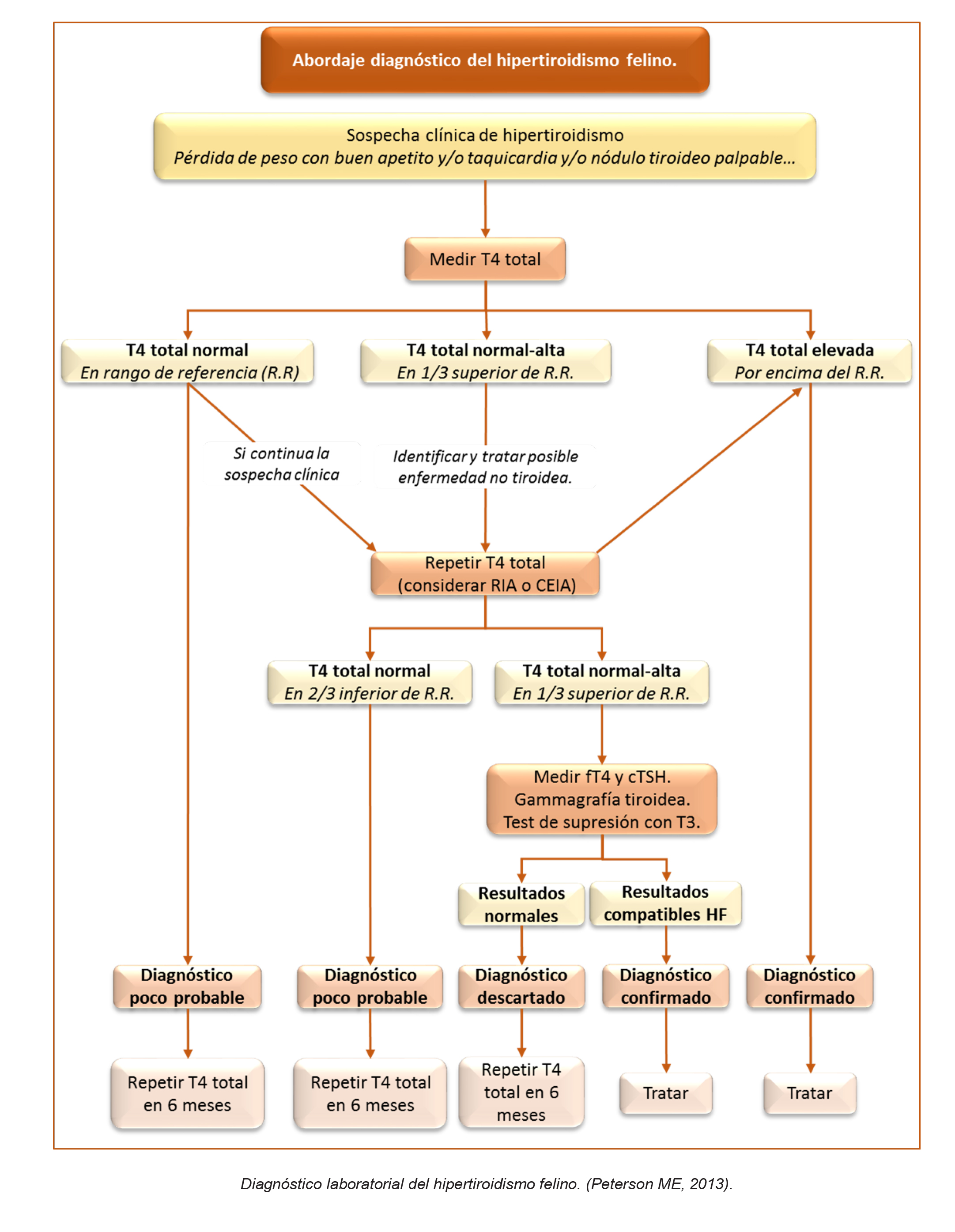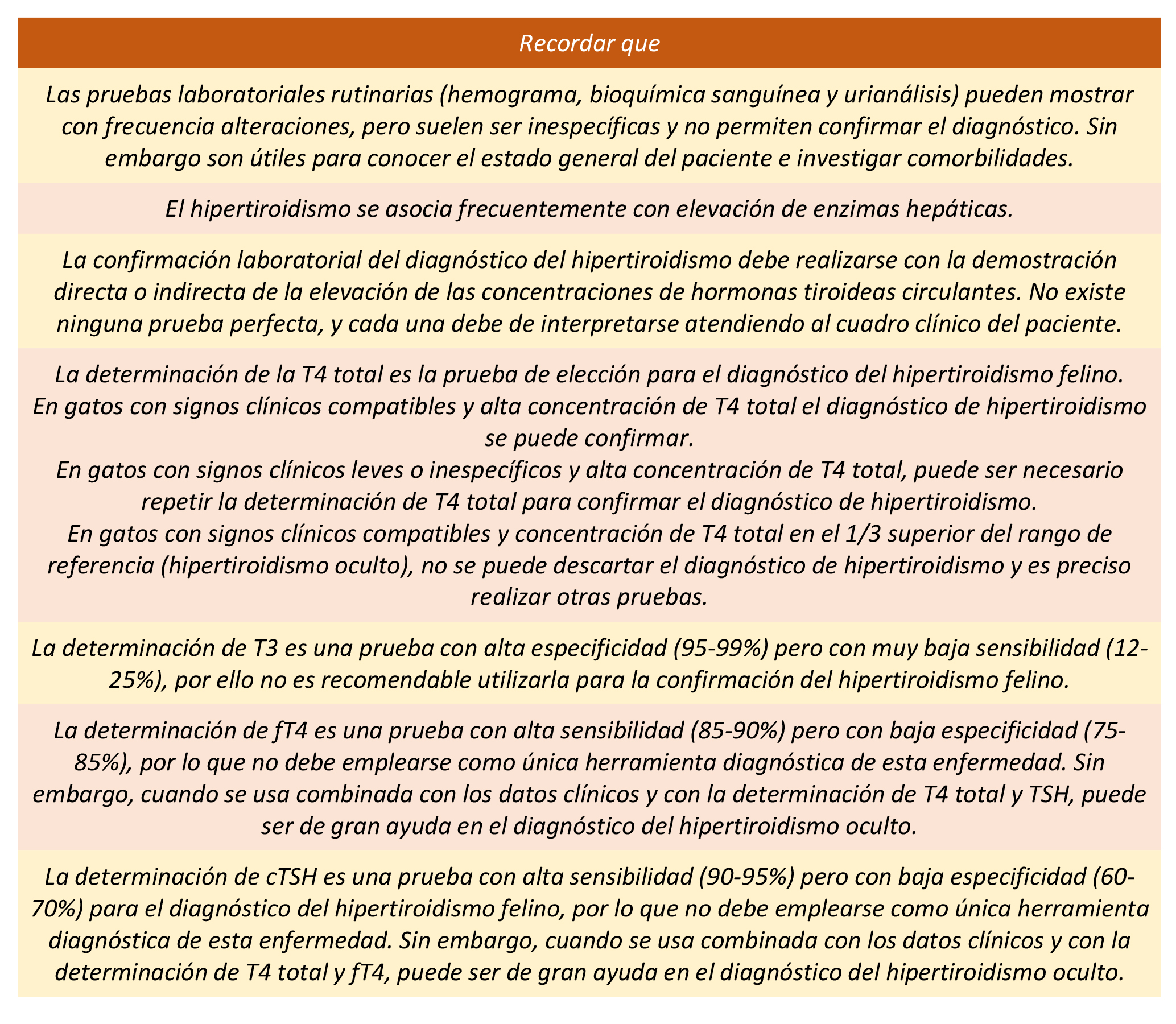What is IODOCAT?
IODOCAT is Spain’s first and original specialist veterinary center for the diagnosis and treatment of feline hyperthyroidism with radioactive iodine — a simple, highly effective and safe treatment for cats with hyperthyroidism.
We are the only center in Europe to offer an advanced integral diagnosis with precise tests and thyroid scintigraphy to determine individualized doses of radioiodine adjusted to the needs of each patient.
In fact, our patients come from all across Europe, Asia and beyond to receive our treatment protocol established by the originator of radioactive iodine treatment for cats with hyperthyroidism, Dr Mark E. Peterson.
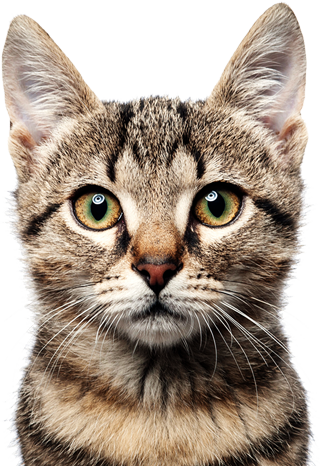
Who’s behind IODOCAT?

Dr. Mark E. Peterson
With a Doctor in Veterinary Medicine degree from the University of Minnesota in 1976, Dr. Peterson has since dedicated himself to research and teaching in Medicine, Endocrinology and Veterinary Radiology, as a professor in several American universities. He previosly was Head of Endocrinology and Nuclear Medicine at the prestigious Animal Medical Center of New York for more than 30 years.
Dr. Peterson was the first veterinarian to document hyperthyroidism in cats (1979) and the first to treat hyperthyroid cats with radioiodine (1980). Since then, he has directed most of his research to improve the knowledge of endocrine disorders in dogs and cats.
He has published more than 500 scientific articles and book chapters and received numerous awards in recognition of his clinical research. In 2001, he founded HYPURRCAT, one of the main centers of reference in the USA for radioiodine treatment of hyperthyroid cats.
With 40 years of experience and more than 10,000 hyperthyroid cats treated successfully, Dr. Peterson is one of the greatest authorities in Veterinary Endocrinology worldwide and, especially, in Feline Hyperthyroidism.
IODOCAT has the direct support and advice of Dr. Peterson, and all his methodology is applied in our center.
C.V. Dr. Mark E. Peterson
Dra. Pilar Xifra
With a degree in Veterinary Medicine from the Complutense University of Madrid in 1994, Dr. Xifra founded the Leganés Norte Veterinary Clinic in 1998.
Dr. Xifra’s focuses are on Feline Internal Medicine (mainly in the specialty of Endocrinology) and Diagnostic Imaging. She is a founding member of GEMFE (AVEPA Feline Medicine Specialty Group) and member of the ISFM (International Society of Feline Medicine).
As a result of her interest in these specialties, in 2015 she decided to develop and open the first Integral Center for Diagnosis and Treatment with radioiodine (131I) of Feline Hyperthyroidism in Spain: IODOCAT.
Dr. Xifra received advanced training at the HYPURRCAT Animal Endocrine Clinic in New York, under the supervision of Dr. Mark E. Peterson. Consequently, she was accredited as Supervisor in Nuclear Medicine by the Nuclear Safety Council.
Her greatest satisfaction is "Being able to make this effective treatment available to hyperthyroid cats in Spain".
Since then, her professional activity is focused on the application, research and dissemination of feline hyperthyroidism treatment with radioiodine, having contributed to numerous publications, conferences and research projects.
Facilities: Security and Wellbeing
IODOCAT is equipped with treatment facilities especially designed to ensure the care and wellbeing of our patients, adjusted to the regulations set by the Nuclear Safety Council.
As true lovers of cats, we are attentive to their special needs and each patient is treated with the utmost affection and care — as if each one is our very own kitty!Our focus is to combine the best of medical care with that extra-special touch of relaxation so that both patient —and owner— can have peace of mind during their cat’s stay at out center.
Comfort
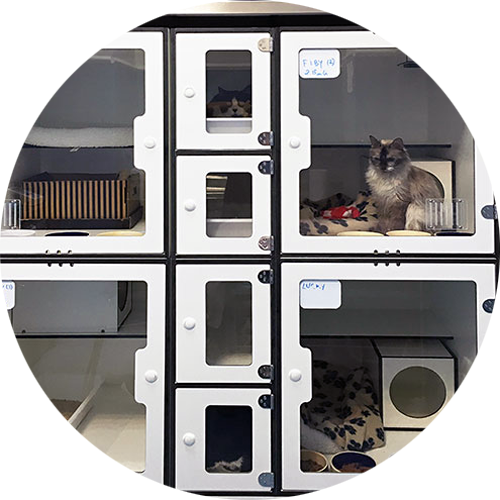
During treatment, it will be necessary for your cat to be isolated — but we have designed special accommodations to give them the greatest comfort during their treatment and stay at Iodocat! Your cat will have their very own “cat condo” — a spacious, cosy and secure enclosure.They are individual condos with transparent door and diverse zones: a zone of rest with bed, trough and drinker; a raised platform, for curious cats; and a place to hide (especially important in shy cats). The sandbox is in an independent cabin for maximum kitty comfort!.
Wellness

Although the treatment with radioiodine is painless, at IODOCAT we always treat our patients as extra-special VIPs to make them feel at home! We visit them twice a day to give them lots of attention and care. Also, for the ultimate cat-spa experience, the room features relaxing music and a TV screen with feline entertainment videos!
Confidence

We know how hard it can be to separated for a few days from our kitty companions. To help keep you up-to-date on how they are doing, we will be in touch with you every day with a progress update. You can even watch kitty yourself 24/7 from you mobile device, thanks to the private live webcam stream available directly from your cat’s condo.
What is Feline Hyperthyroidism?

Feline hyperthyroidism is a disease that affects more than 10% of cats older than 10 years.
The condition occurs in the thyroid glands due to the development of hyperplasias or benign tumors (in 98% of cases), or malignant tumors (in 2%).
The neoplastic tissue is hyperactive and produces an increase in the secretion of thyroid hormones (T4 and T3), which is manifested by clinical pictures of hyperthyroidism.
Hyperthyroid cats display weight loss, increased appetite, behavioral disturbances (meowing, nocturnal hyperactivity), drinking and urinating a lot, and may experience vomiting or diarrhea.
It is a progressive disease, which not only affects the general metabolism of the patient, but over time can cause functional deterioration of other organs (heart, kidney and liver).
Being a neoplastic disease, although the tumor is initially benign, without proper treatment it can become a malignant cancer.
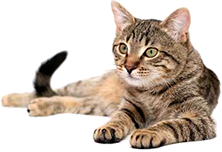
Diagnosis of Feline Hyperthyroidism

At IODOCAT, we know that diagnosis of feline hyperthyroidism is complex.
Its diagnosis is primarily based on the assessment of clinical symptoms, physical examination (cervical masses), hematological and biochemical blood tests, and thyroid function tests (serum levels of total T4, TSH and T3). But these markers alone do not give a comprehensive indication of the full extent of the disease and the appropriate line of treatment.
At IODOCAT we have the definitive diagnosis technique for this disease:
Thyroid sicintigraphy.
This is an essential technique to confirm the diagnosis of hyperthyroidism, establish the severity of the disease and determine the most effective therapeutic options.

Thyroid Scintigraphy
A thyroid scan (scintigraphy) is the test of choice in the diagnosis of hyperthyroidism in human medicine.
At IODOCAT, we can make this available to your cat the most advanced technique for the diagnosis of feline hyperthyroidism.
What is thyroid scintigraphy?
It is a diagnostic imaging test in which a radiopharmaceutical is used that is concentrated in the thyroid tissue. This allows to identify and visualize all hyperfunctional thyroid tissue, regardless of its location, unequivocally confirming the diagnosis and providing valuable data (volume, anatomical location and functional activity) to choose the best therapeutic option for your cat.
It is a simple and safe test: it is done by an intravenous injection; usually does not need anesthesia; and the radiation received is very low (20 times less than that of an x-ray).
Six reasons to use thyroid scintigraphy in the management of feline hyperthyroidism:
1. To confirm the diagnosis of hidden hyperthyroidism in hyperthyroid cats with normal total T4 values.
2. To discard false laboratory positives in cats with suspected hyperthyroidism i.e. with high total T4 values, but without thyroid disease.
3. To evaluate the correct therapeutic management in thyroid carcinomas.
4. To choose and plan the best therapeutic option (surgery, radioiodine).
5. To adjust the individualized doses of radiodine to the needs of the each cat, and to destroy all hypersecretory tissue.
6. To evaluate the evolution in hyperthyroid cats treated with surgery or radioiodine.

Treatment of Feline Hyperthyroidism

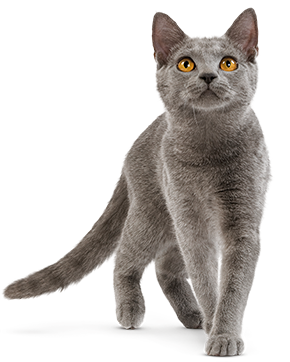
There are several treatments for feline hyperthyroidism.
Medication and diet. Some treatments (medication and diet) are symptomatic, which means that they try to control their symptoms but they do not cure the disease. This means that they have to be used throughout your cat’s life.
Surgery or Radioiodine. However other treatments (surgery and radioiodine), definitively eliminate hypersecretory tissue that causes the disease.
Radioiodine as the most effective method.
In fact, 131I has been shown to be the most effective and definitive method for the treatment of feline hyperthyroidism. It consists of a simple treatment (one subcutaneous injection), and is both safe (few side effects) and definitive (complete cure of the disease).
In IODOCAT, we apply an advanced method for calculating the dose of 131I, combining the clinical data with the parameters obtained by thyroid scintigraphy.
This allows us to use individualized doses adjusted to each cat's disease, minimizing the possible adverse effects (iatrogenic hypothyroidism/persistent hyperthyroidism) of the treatment.
Available treatment options: Healing treatments and Symptomatic treatments
Comparison of feline hyperthyroidism treatments available:
|
|
INDIVIDUALIZED DOSES OF 131I |
THYROIDECTOMY |
METHIMAZOLE |
LOW IODINE DIETS (Y/D HILL´S) |
|
HEALING RATE |
HEALING
TREATMENT Cure
the disease definitively. (Definitive cure >95%). |
HEALING
TREATMENT It
can cure the disease definitively. (If it is possible to remove all the tumor tissue). |
SYMPTOMATIC
TREATMENT It
does not cure the disease, it only controls the symptoms. (Provided that the treatment is strictly maintained). |
SYMPTOMATIC
TREATMENT It
does not cure the disease, it only controls the symptoms. (Provided
that the diet is strictly maintained).
|
|
EFFECTIVENESS
TO ELIMINATE THE TUMOR TISSUE (ECTOPIC TISSUE, THORACIC TUMORS) |
Eliminates
all hyperfunctional tissue, regardless of its location (cervical, thoracic or
ectopic). It prevents the tumor tissue from growing or becoming malignant.
|
It can eliminate all hyperfunctional tissue, if it is surgically accessible. If it is not possible to remove all the tumor tissue, it can continue to grow or become malignant. |
It does not eliminate the tumor tissue, which continues to grow and can become a malignant tumor. By producing more and more hormones, regular dose adjustments are required and may not be controllable with medication. |
It does not eliminate the tumor tissue, which continues to grow and can become a malignant tumor. By producing more and more hormones, it can become controllable only with the diet. |
|
EFICACY
IN THYROID CARCINOMAS (MALIGNANT TUMORS) |
Only effective and definitive treatment in cases of thyroid carcinomas. |
Not effective in thyroid carcinomas, since they are generally not surgically accessible. |
Not effective in thyroid carcinomas (medication can not suppress such high production of hormones). The malignant tumor keeps growing and can infiltrate or metastasize. |
Not effective in thyroid carcinomas (medication can not suppress such high production of hormones). The malignant tumor keeps growing and can infiltrate or metastasize. |
|
APPLICATION OF THE TREATMENT |
Simple
treatment (1 single injection); does not require anesthesia. Isolation for 3-5 days depending on the dose administered. |
Complex treatment (invasive cervical surgery) and anesthetic risks due to age or concomitant diseases. Requires hospitalization and postoperative care. |
Lifetime treatment through daily administration (several times a day) of the medication. It must be done in a strict manner. |
Lifetime treatment through the daily administration of an exclusive and strict diet (complicated in multi-match environments). |
|
RISKS, SECONDARY EFFECTS AND COMPLICATIONS. |
Few side effects |
Potential complications associated with anesthesia and surgery. It can cause postoperative hypoparathyroidism (severe hypocalcemia) by damaging the parathyroid gland. |
Frequent side effects (25% due to intolerance to medication): lethargy, anorexia, vomiting. Less frequent: facial itching, liver failure and adverse effects on the bone marrow. |
It is a diet rich in H / C and low in protein not recommended in geriatric patients; contraindicated in diabetic patients. |
|
IATROGENIC HYPOTHYROIDISM |
Minimum risk of causing hypothyroidism with 131I doses individualized to the needs of the patient (<5%) |
Very frequent. It causes hypothyroidism in 100% of cases with bilateral surgery (extirpation of the two lobes). |
It can lead to hypothyroidism, since it induces low T4 values. Continuous dosage adjustments are necessary. |
It is rare that hypothyroidism occurs because it fails to control the hormonal secretion in most cases, in mild hyperthyroidism can keep the T4 within the reference range, but usually in the upper limit. |
|
RENAL DISEASE |
When the levels of thyroid hormones are normalized, it prevents renal hypertension and proteinuria produced by hyperthyroidism and slows down the development of kidney disease. |
If it is possible to regulate the levels of thyroid hormones, renal hypertension and proteinuria produced by hyperthyroidism are prevented and the development of kidney disease is slowed down. |
Unless there is a good regulation of the medication, glomerular hypertension and proteinuria may persist, favoring the progression of kidney disease. |
Unless there is good hormonal regulation with diet, glomerular hypertension and proteinuria can persist, favoring the progression of kidney disease. |
|
POST-TREATMENT PRECAUTIONS |
It requires precautions during 2 weeks after treatment (avoid close contact with the patient, adequate waste disposal). |
It requires postoperative follow-up. |
It
requires continuous monitoring with periodic blood tests, at intervals of 3
to 6 months, for life. Caution in the handling of the medicine, for risks of cutaneous absorption for the owner |
It requires continuous monitoring with periodic blood tests, at intervals of 3 to 6 months, for life. |
|
LONG-TERM FOLLOW-UP |
It only requires the routine monitoring of any long-term geriatric cat. |
It only requires the routine monitoring of any long-term geriatric cat. |
Continuous dose adjustments must be made, analytical tests are required throughout the animal's life to control the efficacy of the treatment |
Continuous analytical tests are required to track the entire life of the animal. |
|
LIFETIME MEDICATION |
No |
Sometimes (due to hypothyroidism and / or hypoparathyroidism). |
Yes |
Diet |
|
PERSISTENT HYPERTHROIDISM |
Uncommon (<2%). with individualized doses |
Common
if all the thyroid tumor tissue is not removed. Relapse rate of 5% after bilateral thyroidectomy and up to 30% after unilateral thyroidectomy. |
Common.
Relapse because as the tumor grows, the medication can not control the
disease. 100% relapse rate if treatment is abandoned. |
Common.
Relapse because as the tumor grows, the diet can not control the disease. 100% relapse rate if treatment is abandoned. |
|
TIME OF SURVIVAL |
The longest |
Middle |
Short |
Short |
|
COST |
A single outlay to cure your cat, without additional charges. |
Cost similar to treatment with 131I, although its effectiveness is lower. |
In the long term, it is more expensive (continuous visits to the veterinarian, blood tests, cost of medicines) |
In the long term, it is more expensive (continuous visits to the veterinarian, blood tests, cost of the diet) |
Different treatment guidelines with radioactive iodine.
What is Iodine?
Iodine is an element in the diet. The thyroid glands use iodine to produce thyroid hormones.
What is radioactive iodine?
Radioactive iodine, in the context of the treatment for your cat, is an isotope called 131I. During treatment, the 131I is administered to your cat and selectively concentrates ionised radiation in the hyperactive follicular cells of the thyroid tissue and destroys them.
The IODOCAT treatment consists of a precise dose adjustment of 131I that manages to destroy all the tumor tissue of the cat (avoiding persistent hyperthyroidism), and ensuring the integrity of healthy thyroid tissue that will restore thyroid function after treatment (to avoid causing iatrogenic hypothyroidism).
The goal of the IODOCAT treatment is to recover normal thyroid function (euthyroidism), without causing hypothyroidism.
There are several methods for applying this treatment, which differ in the calculation of the necessary dose for your cat and the result of the treatment:
Fixed dose
Administration of single and relatively high doses (4-5mCi) to all patients, regardless of the clinical severity of hyperthyroidism or the size of the thyroid tumor. It can frequently cause hypothyroidism due to over-radiation or persistent hyperthyroidism (ineffective treatment) due to infra-radiation.

Estimated dose
The calculation of the dose is made based on an estimate of the patient's clinical parameters (severity of symptoms, size of palpable nodules and hormonal values). Three clinical degrees of hyperthyroidism are established, to which three fixed estimated dose apply): low (2-3mCi), moderate (3-5mCi) and hight doses (5-6mCi). It presents a high risk (> 40%) of causing hypothyroidism.
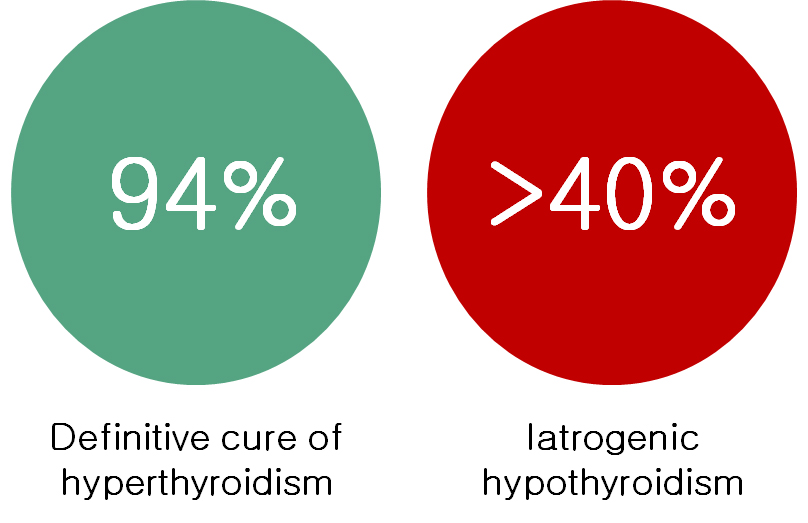
Individualized dose: The IODOCAT treatment
The calculation of the necessary dose is made based on the clinical parameters of the patient (severity of symptoms and hormonal values) and the data obtained in the thyroid scan (volume and functionality of the tumor tissue), which allows to adjust the dose of 131I to the real needs of each patient, optimizing the outcome of the treatment
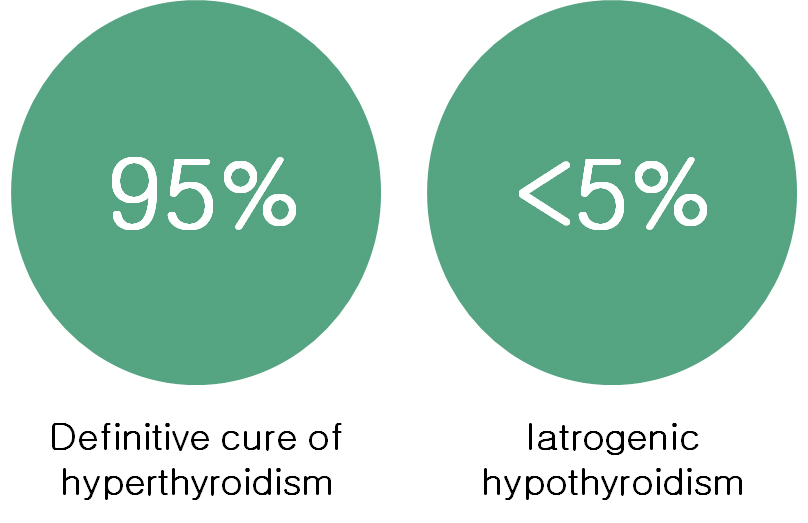
IODOCAT: Individualized dose of radioiodine
At IODOCAT, we are aware that the thyroid disease of each cat is different. As such, each cat will need different doses of 131I for the treatment to be successful.
That’s why at IODOCAT we perform the calculation of the personalized dose that each cat needs based on their unique clinical parameters: Severity of symptoms and hormonal values; by performing thyroid scintigraphy; and according to the volume and functionality of their tumor tissue.
Knowing all the characteristics of the disease, we can adjust the exact dose necessary for the cure of hyperthyroidism (95% of cases), minimizing the possible adverse effects (<5% of hypothyroidism).
Customized dose calculation allows successful treatment of cats with mild or moderate hyperthyroidism at lower doses than those used in other 131I , reducing your pet's exposure to unnecessary radiation, decreasing the period of isolation and, most importantly, minimizing the risk of causing iatrogenic hypothyroidism.
In addition, the use of thyroid scintigraphy in the calculation of personalized doses allows safe management of patients who require higher doses of 131I, as in cases of severe hyperthyroidism or thyroid carcinomas
|
PATIENT WITH EARLY HYPERTHROIDISM tT4: 4.8 μg / dl |
PATIENT WITH MILD HYPERTHROIDISM tT4: 11 μg / dl |
PATIENT WITH SEVERE HYPERTIROIDISM tT4:> 20 μg / dl |
|
|
Pretreatment scintigraphy |
|
|
|
|
Post-treatment scintigraphy |
|
|
|
|
Successful treatment with 131I |
Individualized dose of 1.38 mCi. |
Individualized dose of 1.80 mCi. |
Individualized dose of 30.00 mCi. |
Information for owners

Feline hyperthyroidism is a chronic disease that greatly affects the quality of life of your cat, and can put them risk.
But hyperthyroidism has a cure: treatment with individualized doses with 131I.
A simple, safe and definitive treatment that can return your cat to health, with a single personalized dose of 131I.
Why not offer your cat the best option and choose IODOCAT?
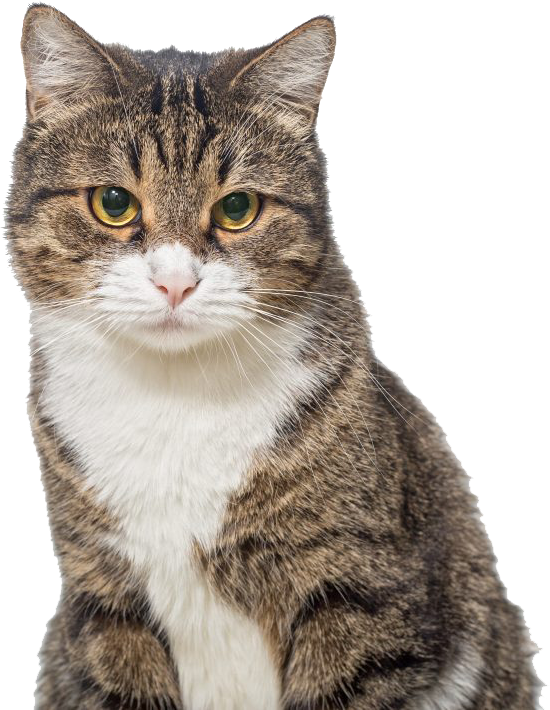
Why choose IODOCAT?
|
EXPERIENCE |
IODOCAT is the Spanish center with the most experience in the treatment of feline hyperthyroidism with I131, with more than 100 cats treated successfully. In addition, we counts as an external consultant with Dr. M.E. Peterson, the world's leading expert in feline hyperthyroidism, who directly advises our team when necessary. |
|
ADVANCED METHOD OF DIAGNOSIS |
We offer your cat the most advanced method for the diagnosis of feline hyperthyroidism: thyroid scintigraphy. A technique that allows us not only to confirm the diagnosis, but also to obtain valuable information to determine the best therapeutic option to cure your cat. |
|
INDIVIDUALIZED DOSIS OF RADIOIODINE DE I131 |
We adjusted each dose of I131 based on the actual needs of each patient's disease. This customized dosing method not only results in a high cure rate (98%) with a single dose (100% cure when an additional dose is needed), but also greatly reduces the incidence of permanent hypothyroidism after therapy (<2%). |
|
TREATMENT OF THYROID CARCINOMA |
We have the equipment and experience necessary for the correct diagnosis and treatment of malignant thyroid tumors. The thyroid scintigraphy allows us to safely calculate and administer the high doses I131 necessary to destroy thyroid cancer. |
|
PERSONAL CARE |
The IODOCAT team monitors the patient's progress twice a day, reporting daily by phone or email to the owner. |
|
WEB CAM |
Each cabin has a live web camera so that the owner and / or his veterinarian can follow live, from his cell phone, the evolution of the patient throughout his stay in our center. |
|
ACCOMMODATION |
During its stay your pet will be in accommodations designed for its comfort. They are individual enclosures with transparent door and diverse zones: a zone of rest with bed, trough and drinker; a raised platform, for curious cats; and a place to hide (especially important in shy cats). The sandbox is in an independent cabin. |
|
ENVIRONMENTAL ENRICHMENT |
The accommodations are in a large and quiet room, with relaxing ambient music and a TV screen with feline entertainment videos. |
|
POST-TREATMENT FOLLOW-UP |
Dr. Xifra is available for any consultation of the owners or reference veterinarians, both during treatment and after discharge. We carried out a post-treatment follow-up, with complete reviews at month, 3 and 6 months (with scintigraphy included) to confirm the correct response to treatment. |
FAQs
About hyperthyroidism — diagnosis and possible treatments
What is hyperthyroidism? Is my cat hyperthyroid?
How to know that my cat is hyperthyroid?
My cat has high thyroid hormone values. Does this indicate hyperthyroidism?
My cat has symptoms of hyperthyroidism, but the tests are normal. Could this still be hyperthyroidism?
What is thyroid scintigraphy?
Is scintigraphy necessary to diagnose my cat’s hyperthyroidism?
Does the scintigraphy make the treatment with 131I more expensive?
Is the scan dangerous?
Is it important to treat my cat if hyperthyroidism is confirmed?
How can I treat my hyperthyroid cat?
How does treatment with radioiodine work?
Are all treatments with 131I the same?
Why use individualized doses of 131I?
Does treatment with individualized doses of 131I have side effects or risks?
What is hypothyroidism?
How often does hypothyroidism develop after treatment with 131I?
And if hypothyroidism develops, how is it treated?
Does treatment with 131I cause kidney disease?
Can we prevent my hyperthyroid cat from developing severe kidney disease?
Is my cat a good candidate for treatment?
Is my cat too old for treatment?
Is the treatment with 131I expensive?
Before treatment
How to prepare my cat for treatment?
Is it necessary to suppress other anti-thyroid treatments before treatment?
Is it necessary to withdraw other medications?
At IODOCAT
What should I do on the day of admission?
Should I bring something for my cat?
What do we do on the day of admission?
How is 131I administered?
Is one injection of 131I enough to cure my cat?
How is my cat during the stay in Iodocat?
How long is the isolation period?
Can I visit my cat during isolation? Private webcam
How can I know the evolution of my cat during isolation?
Can I remove my cat from IODOCAT before the end of treatment?
The day of discharge.
After the treatment
When returning home, is the radiation used to treat my cat dangerous?
What precautions should I take when my cat comes home?
What should I do with cat litter after discharge?
What precautions should I take for my other pets?
How will my cat evolve after treatment?
What rechecks does my cat need after treatment?
What is the long-term prognosis for my cat after treatment with 131I?
Can hyperthyroidism be repeated?
Our Patients
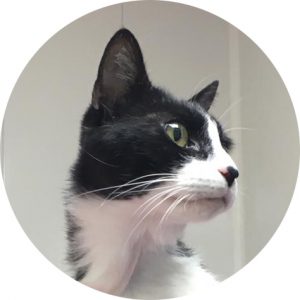
FELIX
«IODOCAT è una clinica specializzata nella cura della tiroide felina, esercitano nella loro sede di Madrid ed è composta da persone molto competenti, professionali, e sopratutto, non di poca importanza, molto umani e disponibili… Tra poco si avvicina il primo anniversario del mio gatto «Felix», che purtroppo, nonostante sia stato completamente guarito dall’ipertiroidea, grazie alla Dottoressa Pilar ed il su staff, gli è subentrato una brutta forma di tumore all’intestino e in poco tempo, ha portato via il nostro Felix…
Rimarrai sempre vivo nei nostri ricordi…»

BETTY
“ Betty tenía 11 años cuando tuvimos la suerte de conocer Iodocat. La habían diagnosticado de hipertiroidismo bastante tarde y este había avanzado bastante, así que en ese momento este era severo y a pesar de llevar bastantes meses con tratamiento farmacológico y dieta, ya practicamente no respondía a nada. Yo estaba desesperada de verla tan deteriorada (pesaba 2,8 kg) y tan enferma. Entonces conocimos al maravilloso equipo de Iodocat, y existía la posibilidad de que todo volviera a la normalidad (bastante increible, no!?) y así fue!!
El trato por parte de Pilar y de su equipo fue más que excelente: Betty ni si quiera estuvo estresada a pesar de su estado y lo más importante… han pasad casi 2 años y hoy está sana y feliz, no necesita medicación, come su dieta normal y pesa 4,6 kg!.
No podría estar más agradecida, y recomiendo a todos los que estéis en una situación parecida que no dudéis en acudir a Iodocat, por su trato , por su profesionalidad y por los resultados!!»
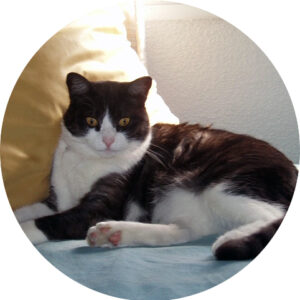
PITUFA
»Pitu siempre ha sido una gata gordita hasta que hace un par de años empezó a adelgazar y en una revisión rutinaria en el año 2017 le diagnosticaron hipertiroidismo a los 14 años de edad.
Empezamos a tratarla con Metimazol tanto en pastillas como en jarabe pero tuvimos que suspender el tratamiento en las dos ocasiones por los efectos secundarios: vómitos y pérdida de apetito. El problema es que el hipertiroidismo iba aumentando y ella adelgazando. Menos mal que buscando por internet encontré Iodocat. Pilar me explicó el tratamiento y se ofreció a hablar con mi veterinaria. Fue súper atenta y resolvió nuestras dudas en todo momento.
Decidimos hacer el tratamiento cuanto antes y en Abril de 2018 fuimos a Leganés a dejar a Pitu. Tanto Pilar como el resto del equipo fueron encantadoras. Trataron a Pitu con muchísimo cariño. Se hizo muy duro dejarla allí pero te vas con la tranquilidad de que se queda en buenas manos. Pude verla las 24 horas del día a través de una webcam, observando que no le faltó cariño y mimos en los 5 días que estuvo allí.
El tratamiento fue un éxito. Al mes, la T4 había bajado a niveles normales estabilizándose en los meses posteriores. La gata empezó a estar más tranquila, ganó peso y hasta el pelo lo tenía más bonito.
Sólo puedo decir que un año después del tratamiento la gata está estupenda y el hipertiroidismo está olvidado.
Gracias a Pilar, a su equipo y a su increíble tratamiento, Pitu sigue con nosotros disfrutando de la vida a sus 16 añitos de edad.»
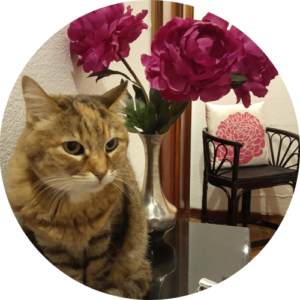
DAISY
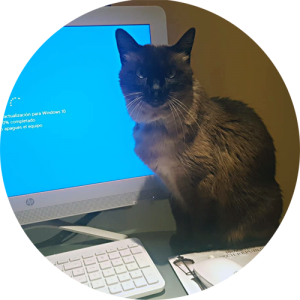
BLANKITA
«Hola Pilar, pues parece mentira el cambio que ha dado Blankita tras un par de meses. Ha recuperado su olor característico, come de manera normal, bebe agua de forma habitual, se la ve alegre y sobre todo ha recuperado su peso. Fantástico el tratamiento y vuestro trato.»
Muchas gracias y un saludo

PELUSA
“Mi nombre es Sara y os presento a Pelusa. Es una gatita de 10 años que me ha acompañado allá donde he ido, es mi fiel compañera. El primer síntoma que noté fue que Pelusa empezó a perder peso poco a poco y presentaba vómitos muy a menudo, por lo que decidí ver qué pasaba y realicé las pruebas pertinentes.
Había escuchado recomendaciones sobre IODOCAT y no me lo pensé dos veces. Es el tratamiento definitivo y más efectivo para acabar con el hipertiroidismo.
El día del ingreso, la acogida de todo el equipo fue inmejorable, son todas encantadoras *(no hay chicos?)*. Tras realizarle diferentes pruebas a Pelusa, siempre con todo el cariño del mundo, se quedó hospitalizada para recibir el tratamiento. Separarte de tu mascota es duro, pero hay que pensar que es por su bien mayor y que sólo iban a ser unos días. Lo mejor de todo es que cuando sentía su falta podía verla a través de la app de la clínica mediante una cámara. Durante su estancia, me mantuvieron informada cada día de los avances de Pelusa.
Pelusa cada día está mejor, ha cogido peso y no ha vuelto a presentar síntomas. Estamos aún con el seguimiento y a la espera de que las próximas analíticas sean tan esperanzadoras como las últimas que le realizamos”.
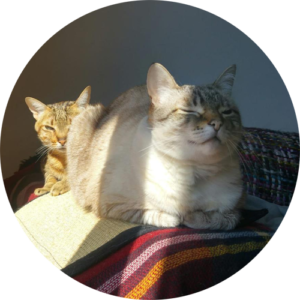
PEQUENA
“La decisión de llevar a Pequena a IODOCAT para el tratamiento con yodo radioactivo fue un gran acierto. Después de que le diagnosticaran hipertiroidismo, tuvo una reacción adversa al tratamiento con pastillas (metimazol), así que empezó con la dieta de Hills Y/D, pero llevaba tiempo perdiendo peso, así que la mejor opción era acudir a IODOCAT, ¡ojalá lo hubiera hecho antes! Pilar y su equipo son grandes profesionales y grandes personas, y Pequena ha recuperado su salud y está esplendorosa, ha ganado medio kilo en 3 meses, y vuelve a ser la gata juguetona que fue, con 12 años recién cumplidos”.

MAUMAU
“Thank you so much Pilar and your team! You have given Mau Mau back her life! Before we came to you, we tried to manage Mau Mau’s hyperthyroidism with medicine, but it really did not work well. The medicines made her sick and she was becoming increasingly withdrawn. I think she was depressed. She was also getting skinny and losing muscle. Every day we gave her the medicine and every day she hated it. I looked and looked for a place in Spain where we could te her for the radiotherapy but, until we found you, there was nowhere and the. Places in France and England required her to be in isolation for up to two weeks which would have been too much for our social kitty. As soon as I spoke to you on the phone, I was confident that we had found a kind, smart and proactive vet who would give the best chance of recovery. You answered all my questions, guided me through the process and worked closely with our local vet to get all the necessary tests done easily. We brought her from Catalonia to Madrid and, after a few days in your care, we brought back a happy healthy cat! Her health has been great ever since and she has slowly regained her weight, is much more comfortable and is now back to being the queen of the house! Your staff were charming and helpful. You are a spectacular vet who has been so kind to her and to us. I could not recommend you more highly and I believe that the radiotherapy, done in the small doses that you use, is the ideal treatment for hyperthyroidism.
It certainly has restored Mau Mau’s quality of life.”
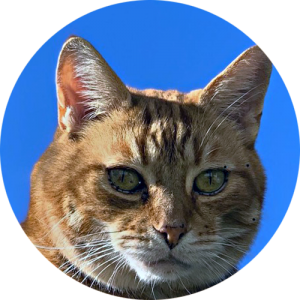
GINGER
“Mi gato Ginger es un gato muy especial e independiente. Cuando le diagnostiqué el hipertiroidismo en verano la medicación oral fue muy difícil y tenía que tomarla todos los días. A pesar de la misma el hipertioidismo no se acababa de controlar. Entonces supe que la radioterapia iba a ser la mejor opción. El equipo de IODOCAT me ayudó mucho a realizar la semana de tratamiento. Cuando fui a la clínica me encantó el manejo y el cariño que le dedicaron a mi gato.
Fue una semana intensa pero luego mi gato volvió a ser él….”

TRASGU
“A Trasgu, nuestra gata de 14 años, le diagnosticaron hipertiroidismo. Las opciones de las que, en principio nos hablaron, pasaban por una operación (con la edad de la gata el riesgo era bastante elevado, por lo que esta opción fue descartada de inmediato) o medicación de por vida con analíticas periódicas. Buscando información a través de internet, descubrimos que existía una tercera opción, consistente en la aplicación de yodo radioactivo, que contemplaba un porcentaje muy elevado de éxito y la curación por completo de los gatos. Así es como llegamos a IODOCAT y contactamos con Pilar y su equipo. Solo podemos tener palabras de agradecimiento para ellas. Desde el principio nos informaron y despejaron todas las dudas sobre el proceso a seguir y los posibles resultados. Nuestras principales inquietudes a la hora de decidirnos eran relativas al tiempo que Trasgu tendría que pasar en el Centro mientras le aplicaban el tratamiento y le bajaba la radiación (aunque tengo que decir que desde que supimos que este tratamiento curaría por completo a nuestra gata se convirtió en nuestra primera opción, a pesar del coste del tratamiento que, en principio, puede asustar un poco, pero que frente a la salud de la gata y a no tener que someterla a medicación de por vida, con posibles efectos secundarios, te ayuda a disipar cualquier tipo de dudas). Sin embargo, la sensación cuando dejamos a nuestra gata en el Centro es que no podía quedar en mejores manos. El cuidado con que la trataron y el cariño que le mostraron, así como la posibilidad de poder ver a la gata en todo momento a través de la webcam, nos dejó muy tranquilos. Creo que lo pasamos peor nosotros que la gata durante los 3 días que estuvo en IODOCAT. En resumen y por no extendernos más, nuestra valoración con respecto a IODOCAT no puede ser mejor y nuestro consejo, basado en nuestra experiencia es que, sin dudarlo, consideréis esta alternativa como la mejor opción para la salud de vuestro gato y vuestra tranquilidad. Aprovechamos esta oportunidad para dar de nuevo las gracias a IODOCAT y para animar a Pilar y su equipo a continuar con esta labor tan importante para los gatos con hipertiroidismo como para sus dueños, a los que también nos ayudáis a ser más felices y nos mejoráis un poco más la vida incrementando la calidad de vida de nuestros gatos y alargando el tiempo que tenemos para pasar junto a ellos.”

MININO
“Grandísimo servicio y resultado. Además magnifico trato e información. Recomiendo IODAT 100%.”
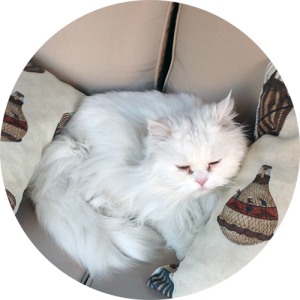
COPLITA
“Hola me llamo Coplita, el otoño pasado estuve malita. Me sentía mal, después del tratamiento he vuelto a ser la de antes, juego, tomó el sol y puedo comer de todo.
Hasta siempre.”
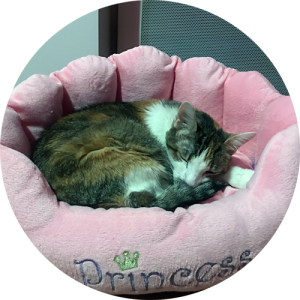
SUERTE
“Mi gatita de 16 años, Suerte, se hizo el tratamiento en septiembre. Hoy en día está de MARAVILLA, ha vuelto a nacer. MIL GRACIAS al equipo de IODOCAT”

LADY SUZIE
“From the very first moment I emailed with Dr. Pilar Xifra, I knew that she was the perfect doctor to treat my beloved Lady Suzie. With a unique combination of technical mastery of hyperthyroidism, the most advanced treatment protocol for severe cases, and her warm kitty bedside manner, her expeirence and expert care is equalled by her genuine love of cats. She treated my Lady Suzie as an individual, with so much care and compassion and provided daily updates and went above and beyond to treat and completely cure my cat, who is stronger than ever and doing fantastically well now. I recommend IODOCAT and Pilar’s dream team of vets warmly. Thank you!”
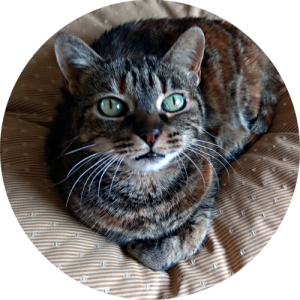
FRIEDA
“Gracias a Pilar y a su equipo de IODOCAT, Frieda y yo vamos a poder disfrutar durante más tiempo de la vida juntas.”
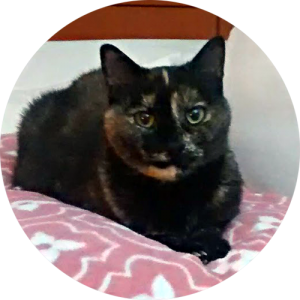
SOPHIE
“En septiembre de 2017 Sophie es diagnosticada de hipertiroidismo, pero el tratamiento con medicación, además de estresante le dio reacción alérgica y hubo que suspenderla. A través de su veterinaria, investigando en internet y consultando a conocidos, contacté de IODOCAT, como la curación definitiva y este caso único para el hipertiroidismo de Sophie. Desde el primer momento que me puse en contacto con IODOCAT, Pilar me transmitió la seguridad y confianza de que era el tratamiento indicado y la curación definitiva. En la clínica Sophie fue recibida de la forma más calurosa, delicada y amorosa que un veterinario puede tratar a un gato, saben perfectamente que necesita para sentirse cómodo, dentro de lo estresante que puede ser, se preocupan de todos los detalles, desde sus latitas o su mantita. Incluso le pusieron música relajante. El poder verla por video cámara es genial, da mucha tranquilidad. Rigor profesional en todo momento y un exquisito trato personal con el animal y conmigo.Pasada la primera semana de volver a casa, ya comencé a notar la mejoría, dicen que no es lo habitual pero noté menos nerviosismo y mejora en todos los síntomas. Necesitó una 2ª radiación y ahora está perfecta, maravillosa y guapa.
Me siento feliz y orgullosa con la decisión tomada y muy agradecida a IODOCAT por su trato y profesionalidad.»
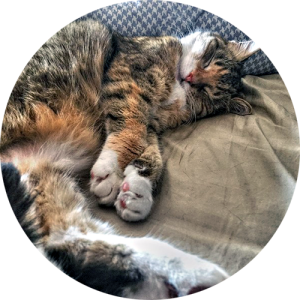
RAND
» We had a wonderful experience with IODOCAT and Dr. Pilar!. Dr. Pilar and her staff were extremely professional and welcoming, and answered all our concerns when we arrived.
Our cat was cared for like family, and we were able to watch her through the webcam, and talk to the staff throughout her entire stay. The treatment is easy and simple, but extremely personalized and scientific. Our cat was relaxed during her stay and was completely cured afterwards. She has been a very happy cat ever since!
I am so happy we found this facility and would warmly recommend it to others. If you need I131 treatment for your cat, this is the best place in Europe!»
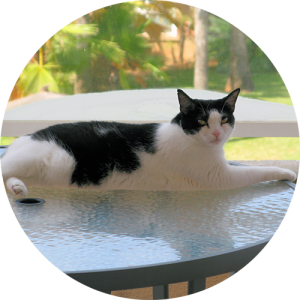
GINA
“Nuestra gatita Gina estaba cada vez más delgada y con un apetito voraz por culpa de su hipertiroidismo. Además, éste le producía también problemas digestivos. La llevamos a IODOCAT y ahora nuestra gatita parece otra a pesar de su edad (17 años).
Ha recuperado todo su peso y ya no tiene ningún problema digestivo. Está de maravilla”
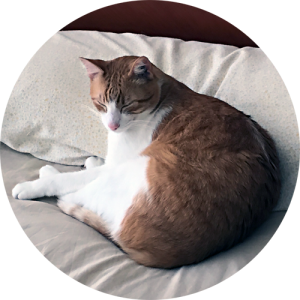
NILO
«Me deba mucho miedo, me imagino que como a todos, dejar ingresado a mi pequeño tantos días, pero la experiencia resultó fantástica. Lo cuidaron de maravilla y yo podía verlo las 24 horas gracias a las cámaras. Ahora Nilo vive feliz de nuevo y se acuerda mucho de sus vacaciones en el Hotel de Madrid, de las pelis que veía en la tele y de todas las chicas. Si tenéis a un peque malito, ni lo dudéis, os lo agradecerá de por vida»

JOSE
«Cuando diagnosticaron a Jose (gato de 13años) de hipertiroidismo, tuvimos esa sensación de ¿y ahora qué? Empiezas a informarte de todas las opciones. Entonces descubrí IODOCAT y a Pilar. Pude plantear todas mis dudas (no soy fácil) y me explicó todo con un montón de datos, me dedicó muchísimo tiempo sin ningún tipo de compromiso. La experiencia espectacular, información en todo momento, Jose estuvo encantado con todas ellas recibiendo mimos los días que estuvo allí.
El resultado es que mi gato ya no tiene hipertiroidismo. Recomendadísimo.»
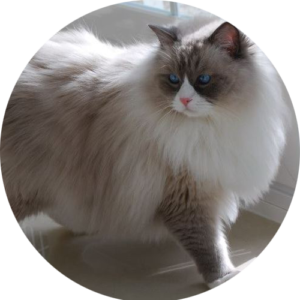
QUINTO
«Mi gato Quinto fue diagnosticado como hipertiroideo y me recomendaron esta clínica de referencia para un tratamiento con yodo. La experiencia ha sido muy positiva, hace ya un año y Quinto vuelve a hacer una vida normal y se encuentra totalmente recuperado. El trato ha sido en todo momento muy cercano, me dieron todo tipo de explicaciones sobre esta enfermedad, en qué consiste exactamente este tratamiento y por qué es lo más adecuado en vez de una medicación de por vida. «
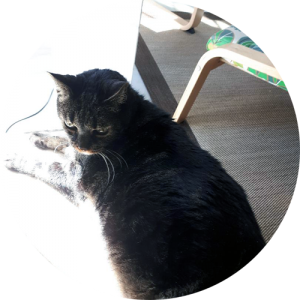
OSITO
“Osito estaba aparentemente bien a sus 15 años, hasta que un día se puso de repente a andar sólo con las patas de delante, arrastrando las de atrás. Lo llevé a urgencias y, aparte de un pinzamiento, mediante el análisis de sangre le diagnosticaron hipertiroidismo. Me llevé un susto enorme porque poco a poco empezó a comer insaciablemente y me pedía comida sin parar mientras adelgazaba cada vez más. Era angustioso verlo comer y comer sin saciarse nunca. Por consejo de un veterinario, lo llevé a la Clínica Leganés Norte. Pilar me dio cita para hacerle el tratamiento un mes después (se me hizo larguísima la espera) y allí estuvo internado unos días. Como era un gato radiactivo por el tratamiento (que no es nada invasivo, por cierto), yo sólo lo podía ver en su habitáculo mediante una app. Se le veía tranquilísimo metido allí y hasta comía ya sin ansia al día siguiente de hacerle el tratamiento. Volvió a casa y en el análisis que le hicieron más tarde ya no había ni rastro de hipertiroidismo. De su época hipertiroidea sólo le ha quedado la manía de comer latas de comida húmeda de supermercado, que era lo que empecé a darle cuando era hipertiroideo y pedía comida sin parar. Ahora se come una de esas latas al día y también su pienso. Está de buen año, eso sí, por la latita esa que me pide cada día.
Estoy muy agradecido a Pilar. Nunca pensé que la curación fuera tan rápida.”
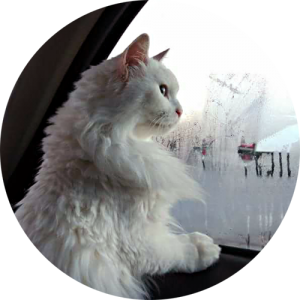
SISSI
“¡Hola! Soy Sissi (sí, sí… emperatriz) y hace unos meses me diagnosticaron un hipertiroidismo «no compatible con la vida», con unos valores muy, muy altos, y empezaron a tratarme con pastillas y luego con jarabe porque vomitaba mucho con la pastilla. Mi mami se asustó mucho y se puso manos a la obra para buscar soluciones, y encontró IODOCAT, la única clínica en España que lo puede curar. Allí me dijeron que no estaba tan malita, que solo un poquito, así que de momento no me han hecho el tratamiento, pero he estado unos días de relax en una suite de hotel, con música y cine, donde me han tratado muy bien y además he podido descansar de Nika, mi hermana, que me hace alguna que otra trastada…
Gracias Pilar y Sara por los mimos y cuidados. ! Seguiremos en contacto!»

WINNIE
«Winnie nunca había salido de su casa de Bilbao (sólo para ir al veterinario) por lo que me daba pánico llevarla a Madrid y dejarla allí, pero mi veterinaria era lo que me había recomendado, así que llamé a Pilar para manifestarle mis miedos y muy pacientemente me escuchó y resolvió mis dudas y cuando la conocí en persona me transmitió mucha tranquilidad. Además podía ver a Winnie las 24h a través de mi móvil. El trato recibido por parte de Pilar y su equipo ha sido fantástico, inmejorable.
Un saludo!»

TOMAS
«Tomás era un gato negro precioso, con unos ojos verdes que quitaban el aliento. De pronto comenzó a adelgazar, no sabía que le pasaba, ¿podía ser estrés?. Le compré de todo lo que me decían para relajarle, ni tan siquiera mis caricias calmaban su ansiedad. Siempre tenía hambre pero no se saciaba y seguía adelgazando. Estaba muy preocupada por mi amigo, mi compañero en los momentos difíciles. Le hacían pruebas y no daban con ello, el tiempo seguía pasando y el no mejoraba. Hasta que di con una veterinaria amiga de mi hija que acertó con el diagnóstico, hipertiroidismo. Entonces me habló de dos tratamientos, uno a base de pastillas, que debía tomar por el resto de su vida, y de un segundo, una sencilla operación a base de Iodo radiactivo que podía erradicar definitivamente su enfermedad. Y me habló de IODOCAT, una veterinaria llamada Pilar aplicaba este tratamiento y al parecer los resultados que obtenía eran muy positivos. Me facilitó su contacto y tras hablar con ella, decidí poner a mi querido Tomás en sus manos. ¡Lo mejor que pude hacer!. Desde el primer momento me pareció una fantástica profesional y una persona amante de los animales que te informaba con claridad de en qué consistía este tratamiento, cómo lo hacía, todos los pasos que iba a dar para conseguir curarle. ¡Y lo consiguió!. Me gustó el antes, el durante y el después, la estancia y el seguimiento de la evolución de Tomás, «el Boss», como le llama ella. Siempre atenta y cariñosa con todos los gatos que pasaban por sus manos. Inclusive, meses después de finalizar el tratamiento, continuaba preguntando por cómo se encontraba y que le enviase fotos. No tengo más que agradecimientos para ella y para su equipo, fantásticos todos.
Tomás te da las gracias por ayudarle a superar su enfermedad y volver a ser un gato con una vida normal desde hace ya 2 años. «.
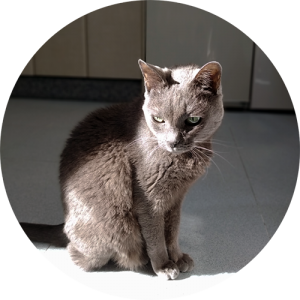
MARLA
«Marla es una gatita de 16 años diagnosticada con hipertiroidismo, el estado de su enfermedad no le garantizaba una calidad de vida a largo plazo debido al estado del tiroides. Tras el tratamiento, Marla está muy sana, feliz y su calidad de vida ha mejorado enormemente.»
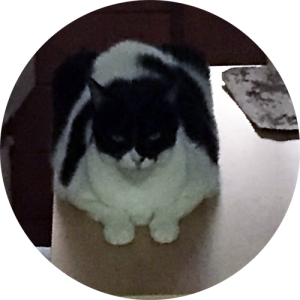
SYLVANAS
“Sylvanas estuvo ingresada hace 2 años. Ella se recuperó por completo, se cogió con mucha antelación y eso ayudo a tener una evolución muy buena. En su día perdió mucho peso, pero después de tratamiento lo ha ganado sin problemas. Hoy en día hace una vida completamente normal.”
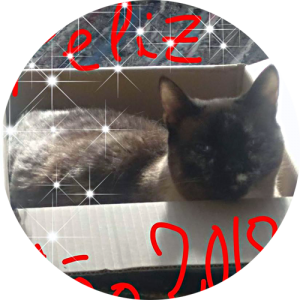
KIRA
«Kira y yo os deseamos un feliz año 2018 a la familia IODOCAT!!
Y agradecer enormemente vuestro trabajo porque gracias a ello Kira está sanísima y guapísima libre de medicamentos.
Un besazo enorme!!!»

MININO
“Minino es un gato de raza europea a quien le diagnosticaron hipertiroidismo a los trece años. Fue tratado con Apelka y, cuando empezó a mostrar efectos secundarios, decidimos tratarlo con iodo 131 en IODOCAT. Todo el proceso ha sido un éxito. La profesionalidad, la experiencia, la amabilidad y el cariño de las veterinarias de IODOCAT y la buena relación que establecieron con la veterinaria habitual de Minino garantizaron un pre y postratamiento exitosos y poco invasivos. Durante el tratamiento propiamente dicho, el cariño hacia el gato en IODOCAT le aseguró una estancia cómoda. Las normas que nos hicieron seguir al volver el gato a casa, protegieron a toda la familia de los posibles efectos adversos del yodo.
Gracias a IODOCAT, hoy Minino, a punto de cumplir sus catorce años, es un gato sano, feliz y hermoso.”
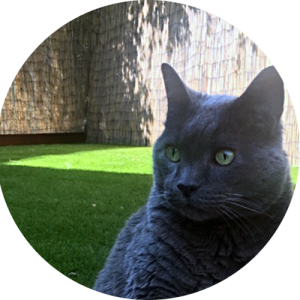
COKI
“Descubrimos IODOCAT a través de nuestra clínica veterinaria en Asturias, cuando nos dieron la mala noticia de que nuestra Coki era hipertiroidea. No lo dudamos, puesto que medicarla toda su vida y hacerle revisiones periódicas nos parecía más complicado y costoso a la larga. Y así, hablamos con ellas y nos fuimos a Madrid.
Simplemente la curaron, y hoy en día ya han pasado 2 años y está sana y feliz, ¡y nosotros más!”
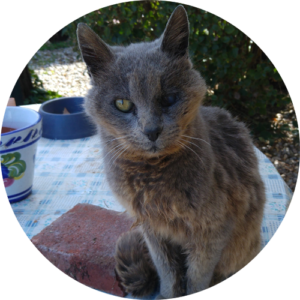
PILTRA
“Piltra llegó a nuestra casa hace unos años en muy mal estado. Le faltaba un ojo y tenía otras heridas. Como pudimos lo cazamos para castrarlo y que el veterinario lo pudiera revisar. Además de faltarle un ojo, tenía balines en las encías. Tuvimos que operarlo del ojo para evitar tumoración y pasado un tiempo, y como comía y adelgazaba, se le diagnosticó hepertiroidismo. Lo empezamos a medicar diariamente y durante un par de años estuvo controlado hasta que nuestra veterinaria nos dijo que la medicación no era efectiva. Nos recomendó una consulta con la Dra. Pilar Xifra, veterinaria de IODOCAT, que era el único centro en el estado que trataba el hipertiroidismo felino con iodo radioactivo. Fue la solución para Piltra.
Después del tratamiento, Piltra se curó absolutamente de su dolencia, y el resto de su existencia tuvo una calidad de vida excelente. Profesionalidad, calor humano y amor a los animales, queda muy claro en el trato con las veterinarias de IODOCAT.”
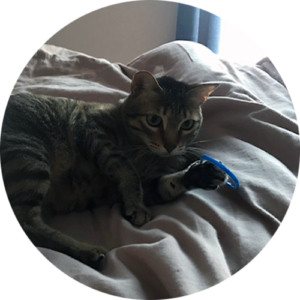
AMPARO
“Amparo a día de hoy y después del tratamiento en IODOCAT con Pilar y su equipo es una gata 100% saludable sin necesidad de ninguna medicación. Y es una verdadera alegría verla tan y tan bien porque nuestra gata presentaba signos de paraplegia y la teníamos que medicar a diario. Era todo un cuadro dramático. Tan joven como era Amparo entonces (3 años). Fue hacer el tratamiento y simplemente ha funcionado al 100%. Y además también podemos añadir que Pilar es una profesional muy agradable al igual que su equipo. Es una suerte que exista IODOCAT.
Muchas gracias Pilar por abrir IODOCAT y luchar por ello porque de verdad vale mucho la pena lo que hacéis. Felicidades y muchísimas gracias por ayudarnos tanto. Un abrazo”.
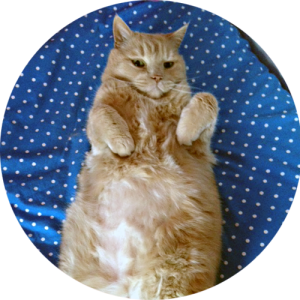
LUCAS
“Me llamo Lucas y tengo casi 15 años. Me trataron con yodo en enero de 2017, hace ya dos años. Mi hipertiroidismo era muy incipiente así que me lo diagnosticó mi veterinaria y me fui derechito con Pilar y su equipo a IODOCAT. No tenía síntomas aún, ni estuve medicado. Mi estancia en la clínica fue corta, pero estuve a gusto escuchando pajaritos y comiendo lata. Mi mamá estaba preocupada porque nunca me habían ingresado antes, pero se conectaba a la webcam y me veía comer, dormir. Todo se lo explicaron muy bien y le resolvieron todas las dudas .Ya me dieron el alta y aquí sigo como si no hubiera pasado nada.
Estoy muy agradecido a Pilar y a IODOCAT. Besos, Lucas.”
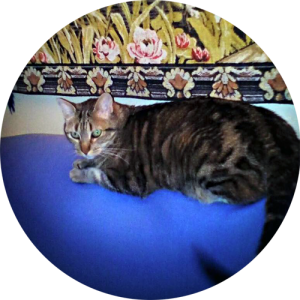
TITI
«Os acordáis de Titi?. Titi es una gata de nuestra familia que tenía hipertiroidismo. Después de un tratamiento con I131en IODOCAT, única clínica en España que realiza este tipo de tratamientos, podemos decir que Titi ha ganado peso y está curada!!!!»
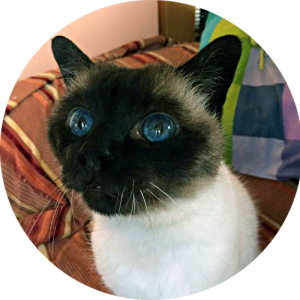
LUKE
“No podemos estar más agradecidos. Nuestro gato, Luke, ha vuelto a la normalidad tras el tratamiento, está recuperando peso y tiene más pelo que nunca. Descubrimos que tenía hipertiroidismo porque comía a todas horas y no paraba de adelgazar. Cuando Pilar nos habló de este tratamiento innovador, que ya estaba dando resultados en otros países, fuimos de los primeros en apuntarnos a la terapia. Luke estuvo ingresado un par de días y lo llevó bastante bien. De regreso a casa y con el paso de las semanas, ha ganado 800 gramos y tiene un pelo precioso. Su forma de comer ha vuelto a la normalidad, ya no tiene esa ansiedad por la comida a todas horas, con lo que también duerme mejor.
Gracias a Pilar y a su equipo por su profesionalidad”
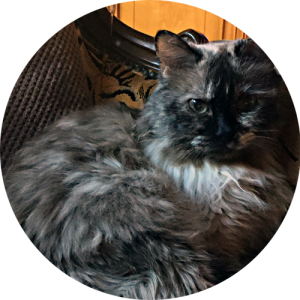
FIBY
“Gracias a Pilar Xifra y su equipo mi gatita Fiby está perfectamente. Ha recuperado más de un kilo de peso y tiene ganas de jugar de nuevo.”
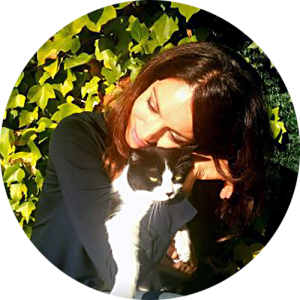
CARLOS
“Hola, soy Mª Luisa Palmero, veterinaria de Gattos Centro Clínico Felino y quiero contaros la historia de mi gata Carlos, de 16 años de edad y hasta hace poco hipertiroidea. Gracias Pilar Xifra, compañera veterinaria directora del proyecto, por haber hecho realidad un sueño en España y haber curado a mi gata”….
https://www.gattos.net/blog/entry/enfermedades/hipertiroidismo.html
Information for veterinarians

Our goal is to make available to your patients the most advanced diagnostic method and the most effective and safe treatment to achieve the cure of feline hyperthyroidism.
At IODOCAT we use an advanced procedure for the calculation of the individualized dose of 131I needed by each hyperthyroid patient. This method combines clinical data (severity of symptoms, thyroid hormone values and presence of palpable thyroid nodules), parameters obtained by thyroid scintigraphy (location, volume and functionality of the thyroid tissue), and the uptake uptake of thyroid 131I measured at 24 and 48 hours after treatment.
This method of custom adjustment of 131I doses allows us to reach success rates (complete and definitive cure of hyperthyroidism) of more than 95% of cats treated with a single dose (100%, when they require an additional dose), and minimize the risk of causing iatrogenic clinical hypothyroidism (<5% of treated cats).
It is our intention to maintain a continuous collaboration during pretreatment, treatment and aftercare. Therefore, we are at your disposal when you need it to resolve any doubt and inform you at all times of the evolution of your referred patient. On the day of discharge, we will send you a complete clinical report and jointly carry out the post-treatment follow-up.
To avoid displacement of the owners, we suggest carrying out the pre-treatment visits and the monthly and three-month check-ups (blood tests) at the reference clinic.
Why use thyroid scintigraphy in the management of feline hyperthyroidism?
The thyroid scan is a simple and safe tool for the management of the hyperthyroid cat.
It has been demonstrated as the diagnostic method with greater sensitivity and specificity for the diagnosis of feline hyperthyroidism, even superior to that of laboratory tests for the detection of thyroid hormones.
It allows the evaluation of several important parameters of the hypersecretory tissue of our patient, such as:
Location: Thyroid scintigraphy can reveal all the hypersecretory tissue, regardless of its location, which is especially useful in the surgical management of the disease (affected lobes, lobes displaced to the thoracic cavity, ectopic tissue, infiltration / metastasis in thyroid carcinomas).
Tumor volume: With thyroid scintigraphy we can assess the total volume of the hypersecretory tissue, which allows a better planning of the surgical technique or the dose of 131I necessary to eliminate all the tumor tissue.
Functionality: This technique not only provides morphological data, but also allows the functional capacity of the hypersecretory tissue to be assessed by the degree of uptake of the radiopharmaceutical. This data is especially important to be able to calculate the dose of 131I necessary to destroy all the neoplastic thyroid tissue, without affecting the healthy tissue.
Thyroid scintigraphy provides numerous advantages for:
• Confirm occult hyperthyroidism in cats with normal total T4 values.
• Discard false laboratory positives in cats without thyroid disease.
• To evaluate the correct therapeutic management of thyroid carcinomas.
• Choose and plan the best therapeutic option (surgery, radioiodine).
• Adjust custom doses of 131I to minimize the risk of iatrogenic hypothyroidism.
• To evaluate the evolution in hyperthyroid cats treated with surgery or radioactive iodine.
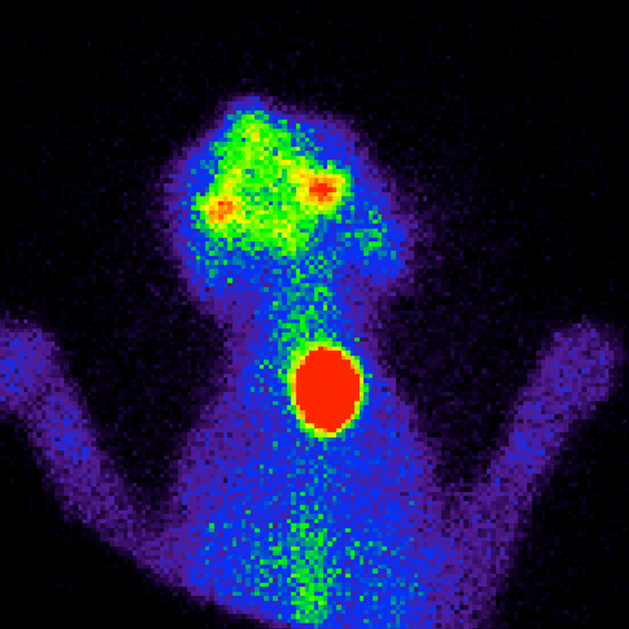
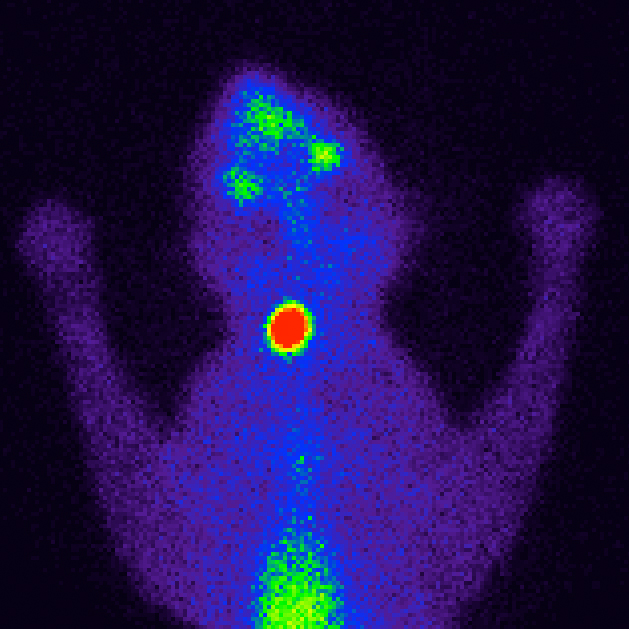
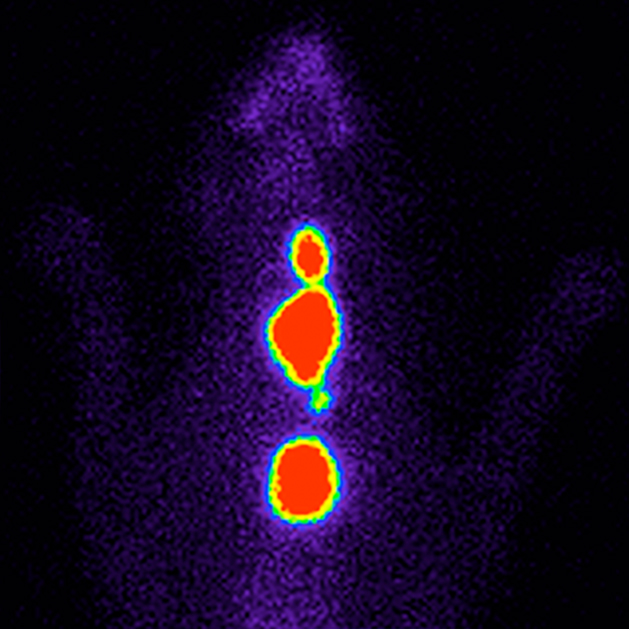
Peterson ME, Broome MR Thyroid scintigraphy findings in 2096 cats with hyperthyroidism. Vet Radiol Ultrasound 2015; 56 (1):84–95.
Peterson ME, Guterl JN, Rishniw M, Broome MR. Evaluation of quantitative thyroid scintigraphy for diagnosis and staging of disease severity in cats with hyperthyroidism: comparison of the percent thyroidal uptake of pertechnetate to thyroid-to-salivary ratio and thyroid-to-background ratios. Vet Radiol Ultrasound 2016; 57(4):427-40.
Peterson ME. More than just T4: Diagnostic testing for hyperthyroidism in cats. J Feline Med Surg 2013; 15 (9):765-77.
Why treat our hyperthyroid patients with individualized doses of 131I?
Feline hyperthyroidism is a complex disease that presents a great variability in the response of the patient to conventional treatments.
Some cats are controllable with symptomatic therapies (medication / diet), but in many cases it is difficult to stabilize them and they present a progressive deterioration of their disease. These treatments do not destroy the hypersecretory tissue, but try to decrease their activity and production of hormones. But hyperthyroidism is caused by hyperplasia/neoplasia of the thyroid tissue, which will continue to grow and produce more and more hormones, so it may become impossible to control hyperthyroidism. In addition, we can not forget that it is a neoplastic pathology, which although usually benign, can eventually become a malignant tumor.
Other hyperthyroid cats are suitable candidates for thyroid surgery but in many cases, due to the characteristics of the patient or his pathology, surgical resolution is not possible. Patients with severe hyperthyroidism or severe concomitant geriatric diseases may not be good candidates for surgical treatment. In other cases, in patients with large masses, with hypersecretory tissue in the thoracic cavity (due to displacement or ectopic tissue) or with infiltrating carcinomas, surgery is not possible.
Treatment with 131I completely and selectively destroys hypersecretory tissue in more than 95% of treated cats. It has been demonstrated as the simplest treatment (a single subcutaneous injection), safe (with few risks / side effects) and definitive (eliminates all hypersecretory tissue) of feline hyperthyroidism.
There are different treatment protocols with 131I which differ in the calculation of the necessary doses that are administered to the patient and in the results of the treatment: Fixed doses: Administration of single and relatively high doses (4-5mCi) to all patients, regardless of the clinical severity of hyperthyroidism or the size of the thyroid tumor. It can frequently cause iatrogenic hypothyroidism due to over-radiation (> 65% of cases) or persistent hyperthyroidism due to infra-radiation (> 10%).
Estimated doses: based on the patient's clinical parameters (severity of symptoms, size, palpable nodules and hormonal values). Three clinical degrees of hyperthyroidism are established (to which three fixed estimated doses apply): low (2-3mCi), moderate (3-5mCi) and hight doses (5-6mCi). It presents a high risk of causing iatrogenic hypothyroidism (> 40%).
Individualized doses: calculated based on the patient's clinical parameters (severity of symptoms and hormonal values) and the data obtained in the thyroid scan (volume and functionality of the tumor tissue). It allows the dose adjustment of 131I to suit the real needs of each patient, optimizing the treatment result at cure rates of 95% with a single dose and minimizing the risk of iatrogenic hypothyroidism (<5% of treated cats).
IODOCAT is the only center in Europe that uses the protocol of Dr. Mark E Peterson for feline hyperthyroidism treatment with individualized doses of 131I. We use an advanced procedure to calculate the individualized dose of 131I that each hyperthyroid patient needs. This method combines the clinical data (severity of symptoms, thyroid hormone values and presence of palpable thyroid nodules), the parameters obtained by thyroid scintigraphy (location, volume and functionality of the hypersecretory thyroid tissue), and the uptake of 131I by thyroid measured at 24 and 48 hours after treatment.
This method of customized adjustment of 131I doses allows us to achieve success rates (complete and definitive cure of hyperthyroidism with a single dose) of more than 95% of treated cats (100% with additional dose), and minimize the risk of causing iatrogenic hypothyroidism (<5% of treated cats).
Lucy JM, Peterson ME, Randolph JF et al. Efficacy of Low-dose (2 millicurie) versus Standard-dose (4 millicurie) Radioiodine Treatment for Cats with Mild-to-Moderate Hyperthyroidism. J Vet Intern Med 2017; 31(2):326–34.
Peterson ME, Becker DV. Radioiodine treatment of 524 cats with hyperthyroidism. J Am Vet Med Assoc 1995; 207(11):1422-8.
Peterson ME, Broome MR. Radioiodine for feline hyperthyroidism. In: Bonagura JD, Twedt DC, eds. Kirk’s Current Veterinary Therapy XV. Philadelphia: Saunders Elsevier, 2014:e112-e122.
Peterson ME, Varela FV, Rishniw M. Radioiodine treatment of cats with hyperthyroidism: Evaluation of a novel algorithm for individual dose calculation based on thyroid scintigraphy, serum thyroid hormone concentrations, and thyroid uptake of radioiodine. J Vet Intern Med 2018; 32:2139-40.
Peterson ME, Xifra MP. Broome MR. Treatment of hyperthyroidism: radioiodine. In: Feldman EC, Fracassi F, Peterson ME (eds), Handbook of Feline Endocrinology Milan, EDRA, 2019; 227-54.
Xifra MP, Serrano SI, Peterson ME. Hipertiroidismo felino: diagnóstico y evolución de la enfermedad mediante gammagrafía y tratamiento con yodo radiactivo (I131). Revista Científica Española de Medicina Interna de Pequeños Animales 2018;2:25-31.
Treatment protocol with individualized doses of 131I ?.
Are all hyperthyroid cats good candidates?
Patients with a pathology that requires, during the isolation period, special care (decompensated heart failure, renal failure with an IRIS greater than II, uncontrolled diabetes mellitus, etc.) are not suitable candidates for this treatment. Nor, animals whose nature does not allow their management (unless sedation is possible) or those whose owners do not agree to respect the conditions specified in the registration document, are not good candidates to receive 131I.
Diagnosis and patient preparation:
Given the confirmation of hyperthyroidism by the thyroid hormone profile (total T4), we recommend performing a series of tests in your clinic to assess the presence of underlying serious pathologies that may rule out the suitability of treatment with 131I. It is convenient to make:
• Echocardiography and electrocardiogram: If murmur is detected on auscultation, arrhythmia, conduction disorder or heart failure is suspected, it is necessary to perform an echocardiogram and electrocardiogram one month before treatment to assess cardiac function. In any case, it is also advisable if the patient has been diagnosed with hyperthyroidism for more than a year (chronic disease).
• Abdominal ultrasound: If the cat has little appetite or there are other signs of non-thyroid disease, we recommend abdominal ultrasound.
If treatment with 131I is chosen and the patient is being treated with methimazole, we recommend suppressing the medication 15 days before receiving treatment with 131I. If you are administering diet y/d, it should be withdrawn a month before.
One week before the appointment for treatment, a blood profile (blood count, biochemistry and thyroid hormones panel -T4 total, T3 and TSH-) and urine (complete urinalysis) will be performed in your clinic. Samples must be sent to the IDEXX laboratory.
In IODOCAT:
On the day of admission we will perform a series of tests to confirm the suitability of the patient to receive treatment with 131I. These tests include:
• Measurement of blood pressure.
• Thoracic radiography.
• Renal and muscular ultrasound.
Once confirmed that there is no contraindication to receive treatment with 131I, thyroid scintigraphy will be performed. Occasionally, it may require sedation of the patient for safe handling. After calculation of the necessary individualized dose, 131I will be administered by subcutaneous injection.
After treatment, the patient must remain isolated until the radioactivity received is eliminated at safe levels established by legislation (<3 μSv / h measured at one meter from the patient). This period can vary from 3 days to 2 weeks, depending on the doses of 131I used. Daily measurements of the radiation emitted will be made to assess the uptake of 131I and the patient will be given all the necessary care (feeding, cleaning of the sandbox, necessary medications).
On the day of discharge we will meet with the owner to explain the evolution of your pet, driving precautions when returning home, and the necessary controls in the post-treatment.
Follow-up post-treatment:
It is convenient to carry out a post-treatment clinical follow-up to evaluate the success of the treatment. Three revisions will be made:
Revisions to the month and to the three months of the treatment. They comprise a complete physical examination and blood extraction for analysis (blood count, biochemical profile and determination of thyroid hormones -T4 total and TSH-). To avoid displacements, we offer the owner the possibility of carrying out this review in his clinic. Samples must be sent to the IDEXX laboratory.
Review after 6 months of treatment at IODOCAT. It includes a complete physical examination, blood pressure measurement, blood analysis (blood count, biochemical profile and determination of thyroid hormones -T4 total and TSH-), complete urinalysis and thyroid scan review.
Clinical reports
| CASE | DIAGNOSIS | PRE-TREATMENT SCAN | DOSIS |131 | 6 MONTH EVOLUTION | CONCLUSIONS | |
|---|---|---|---|---|---|---|
| POST-TREATMENT SCAN. | HORMONAL STUDY | |||||
| False laboratory positive (Total T4) | Domestic Short Hair, 14 years old. Asymptomatic Elevation in routine control of tT4: 4.8 μg / dl (TSH: 0.06 μg / ml). Without palpable cervical nodules. |
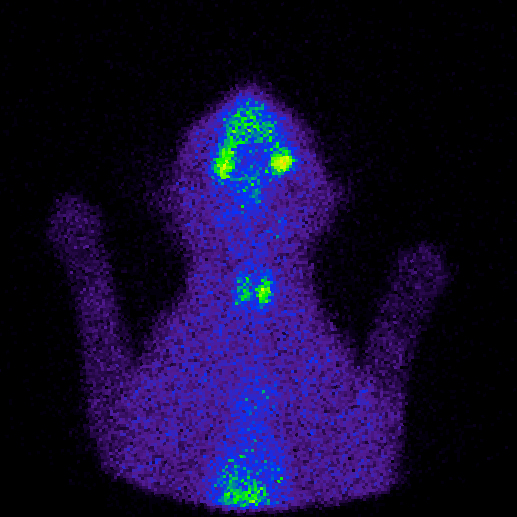 |
- | - | Asymptomatic patient with elevation of tT4 in routine control, but in which the scintigraphy does not show thyroid injury. A small percentage of cats (2%) can physiologically present elevations of tT4 not associated with thyroid disease. The scintigraphy makes it possible to rule out these patients as candidates for antithyroid treatment. |
|
| False laboratory positive (Free T4) | Domestic Short Hair, 14 years old. Symptomatology compatible with severe hyperthyroidism (weight loss, polyphagia, diarrhea), with elevation of fT4: 77.23 pmol / L (T4: 3.04 μg / dl, TSH 0.11 μg / ml). Without palpable cervical nodules. |
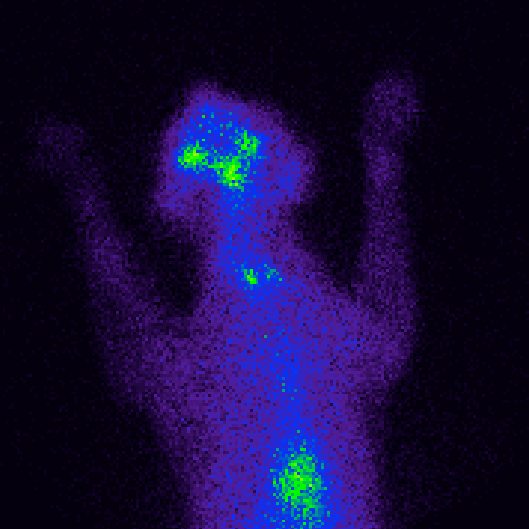 |
- | - | Patient with symptoms compatible with hyperthyroidism and elevation of free T4, but in which the scintigraphy does not show thyroid injury. The elevation of free T4 can produce 20% of false positives, since it can be elevated due to non-thyroid disease (in this case an intestinal lymphoma was later diagnosed). The scintigraphy can also rule out these patients as candidates for antithyroid treatment. |
|
| Masked hyperthyroidism | Domestic Short Hair, 3 years. Symptomatology compatible with mild hyperthyroidism (neurological), without elevation of tT4: 2.4 μg / dl (TSH <0.03 μg / ml). Without palpable cervical nodules. |
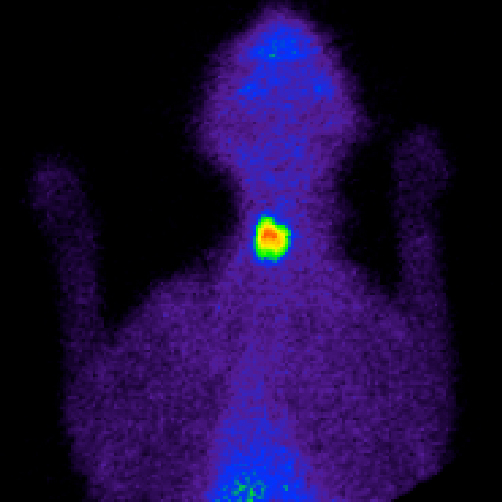 |
1.4 mCi | 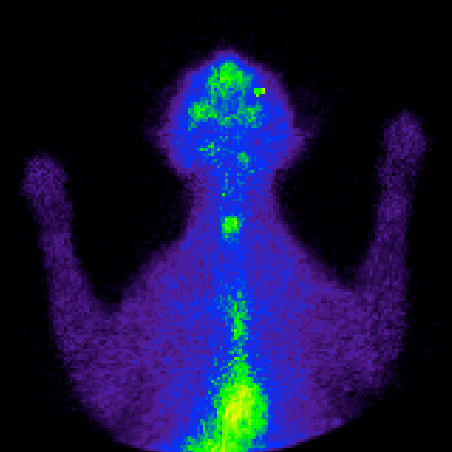 |
tT4: 1,3 µg/dl; TSH: 0.07 µg/ml. |
Patient with mild (neurological) symptoms of hyperthyroidism, but with normal hormonal values and no palpable cervical nodules. The scintigraphy shows the presence of hyperactive tissue in the right lobe, allowing the early diagnosis of occult hyperthyroidism. After the ultra-low personalized dose treatment of 131I, the symptoms disappeared. |
| Left intrathoracic nodule | Domestic Short Hair, 13 years old. Symptomatology compatible with moderate hyperthyroidism (weight loss, polyphagia, tachycardia), with elevation of tT4: 9.3 μg / dl (TSH: <0.03 μg / ml). Without palpable cervical nodules. |
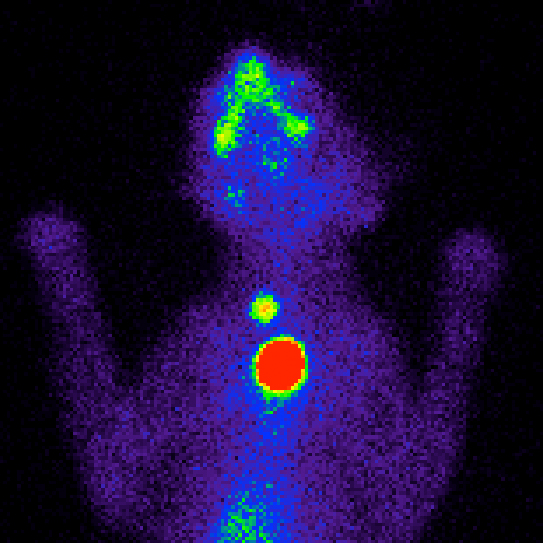 |
3.00 mCi. | 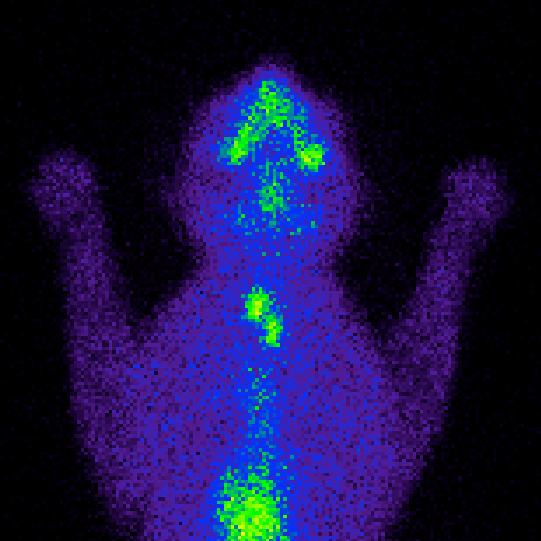 |
tT4: 1.5 µg/dl; TSH: 0.14 µg/ml. | Patient with mild hyperthyroidism, no palpable cervical nodules. The scintigraphy shows bilateral involvement, with a small nodule in the right lobe and a large nodule in the thorax (displaced left lobe). Poor candidate for surgical treatment due to the bilateral and intrathoracic condition of the tumor tissue. Treatment with low-individualized dose of 131I resolved hyperthyroidism, without producing iatrogenic hypothyroidism. |
| Treatment with ultra-low doses (<2 mCi) | Domestic Short Hair, 12 years old. Symptomatology compatible with mild hyperthyroidism (weight loss), with elevation of tT4: 4.8 μg / dl (TSH: <0.03 μg / ml). Right palpable cervical nodule (8 mm). |
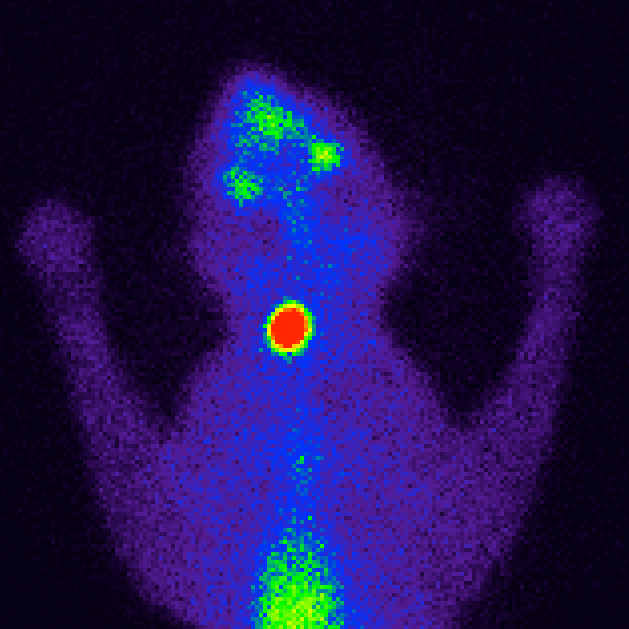 |
1.38 mCi. | 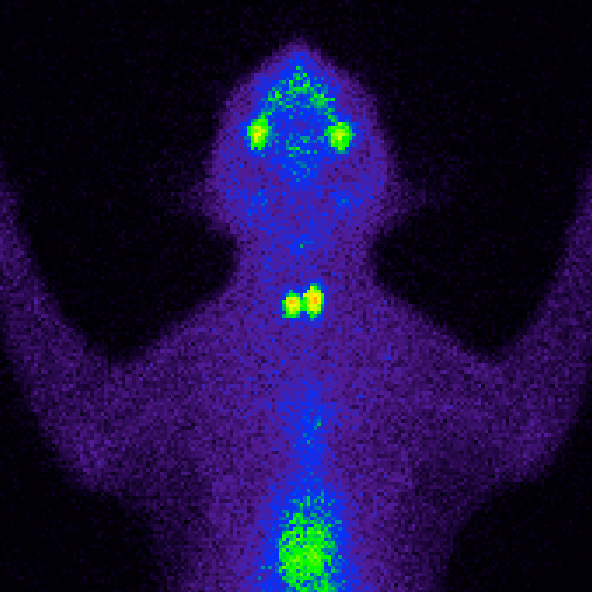 |
tT4: 1.8 µg/dl; TSH: 0.08 µg/ml. | Patient with mild hyperthyroidism, with hypersecretory tissue scan in the right lobe. The calculation of individualized doses (through clinical data, scintigraphy and measurement of uptake), allows treating these cases with ultra-low doses (<2 mCi). Treatment with 131I resolved hyperthyroidism, without producing iatrogenic hypothyroidism. |
| Ectopic tissue | Domestic Short Hair, 14 years old. Symptomatology compatible with severe hyperthyroidism (weight loss, polyphagia, tachycardia), with elevation of tT4: 12.6 µg/dl (TSH: <0.03 µg/ml). Right palpable cervical nodule (2 cm). |
 |
3.28 mCi. | 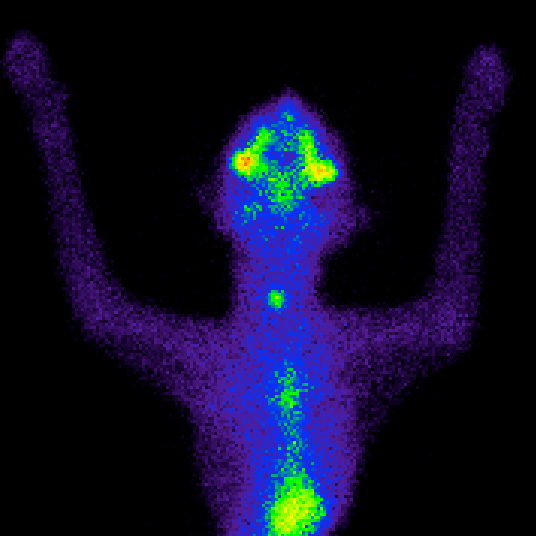 |
tT4: 1.3 µg/dl; TSH:<003 µg/ml. | Patient with severe hyperthyroidism, who presented on the scan a large right cervical nodule and a large nodule on the thorax (ectopic tissue). Bad candidate for surgical treatment. Treatment with low-medium individualized dose of 131I resolved hyperthyroidism, without producing iatrogenic hypothyroidism. |
| Persistent hyperthyroidism after treatment with estimated doses: | Domestic Short Hair, 8 years old. Symptomatology compatible with severe hyperthyroidism (weight loss, polyphagia, tachycardia), with elevation of tT4: 15 μg / dl (TSH <0.03 μg / ml). Palpable right cervical nodule (3 cm). Treated with estimated doses of 131I (3 mCi), without scintigraphy: Persistent hyperthyroidism. |
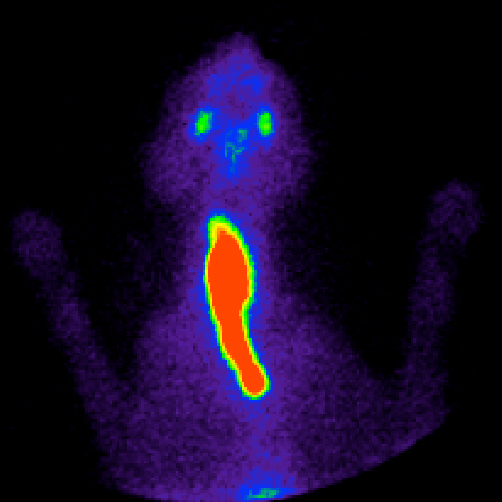 |
30 mCi. | 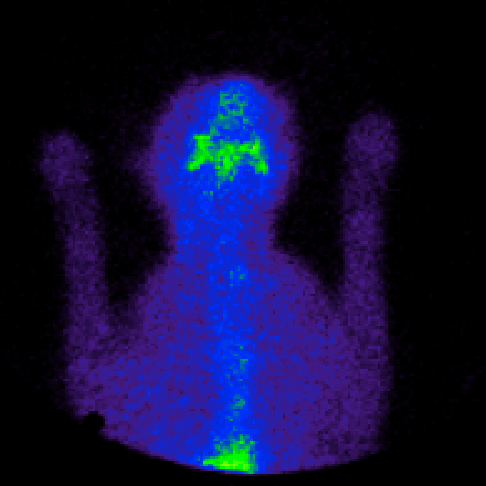 |
tT4: 0.7 µg/dl; TSH: 0.25 µg/ml. | Cat treated in France three months before with estimated doses of 131I (without prior scintigraphy): Persistent hyperthyroidism. Re-evaluation at IODOCAT with scintigraphy consistent with thyroid carcinoma. Resolution of hyperthyroidism at 6 months with treatment with high radioiodine dose of 30.00 mCi. In this case, due to the absence of healthy residual tissue, the total ablation of the tumor thyroid tissue produced post-treatment hypothyroidism. |
| Thyroid carcinoma | Domestic Short Hair, 11 years old. Symptomatology compatible with severe hyperthyroidism (weight loss, polyphagia, tachycardia), with elevation of tT4:> 20 μg / dl (TSH <0.03μg / ml). Left palpable cervical nodule (5 cm). In treatment for 5 years with methimazole. |
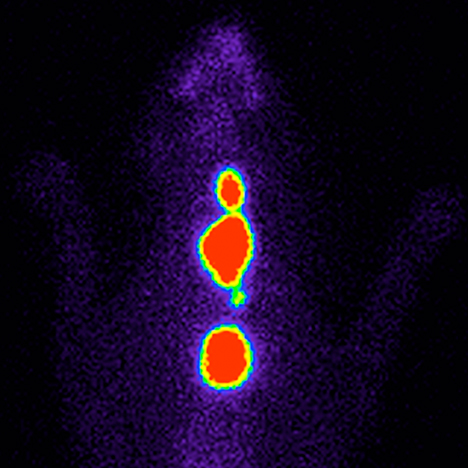 |
30 mCi. | 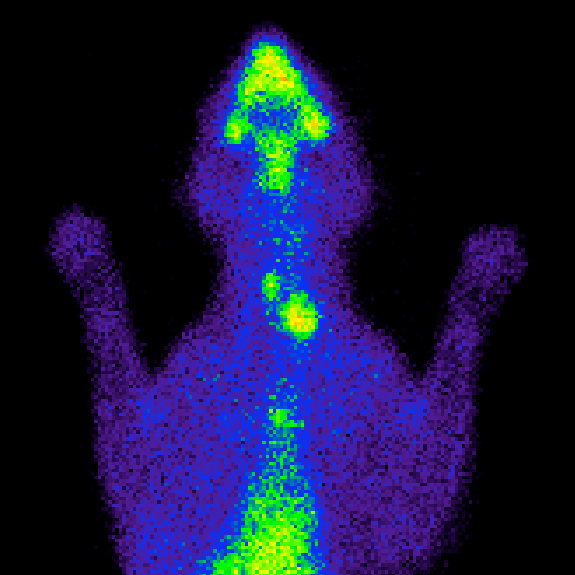 |
tT4: 1.3 µg/dl; TSH: 0.23 µg/ml. | The image on the scan is consistent with thyroid carcinoma (large volume, multiple nodules, intrathoracic presentation). Bad candidate for surgical treatment / medication. The use of scintigraphy and individualized doses of 131I allows safe management in these patients, with cure of thyroid carcinoma and total remission of hyperthyroidism (euthyroid at 6 months after treatment). |
Update on Feline Hyperthyroidism
Prognosis of feline hyperthyroidism
Hyperthyroidism and kidney disease
Iatrogenic hypothyroidism
Radioiodine treatment
Treatment of feline hyperthyroidism.
Imaging diagnosis
Laboratory diagnosis
Clinical signs and physical examination findings
Feline Hyperthyroidism
IODOCAT and Feline Hyperthyroidism: Innovation, research and dissemination
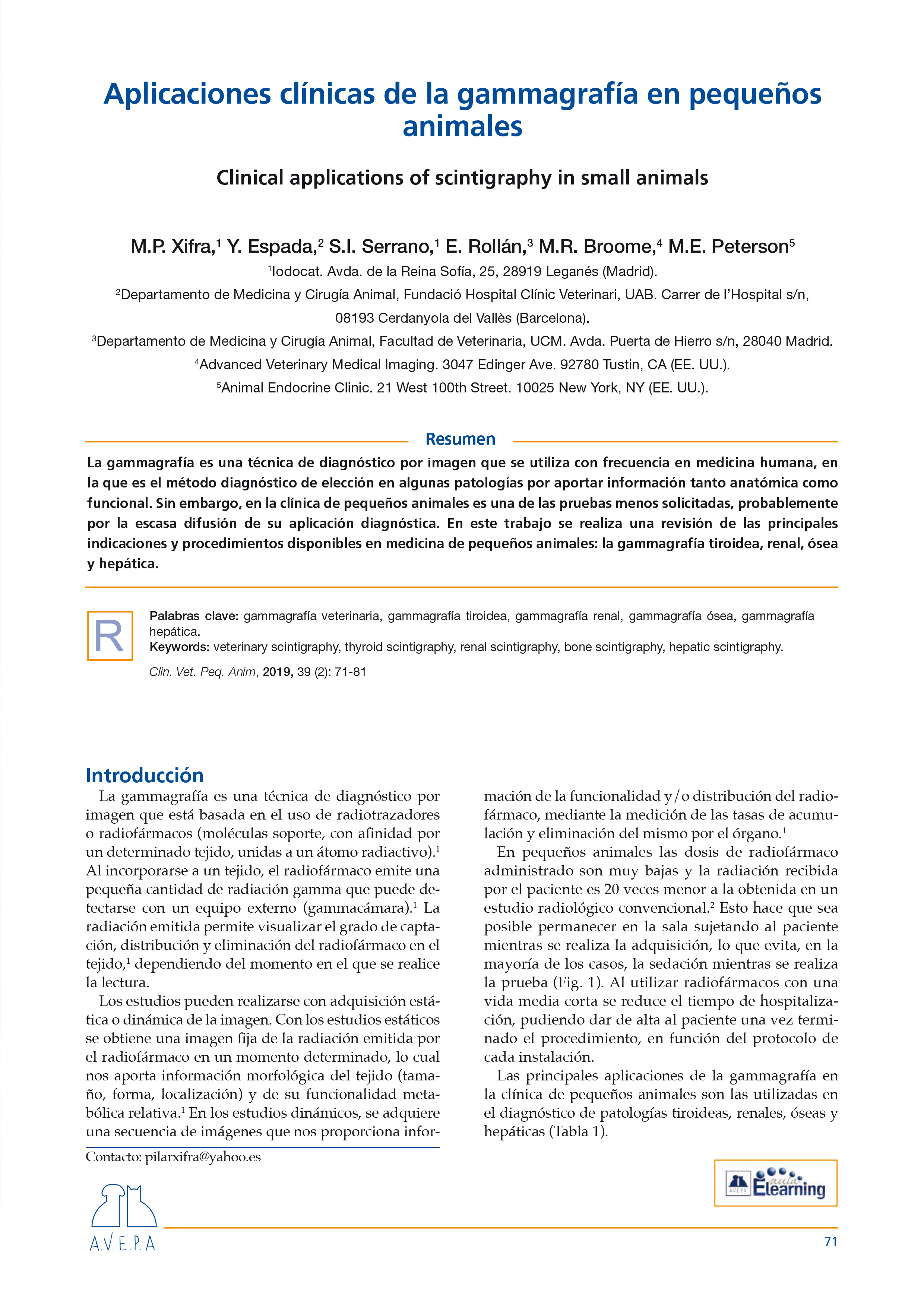
Publicación del artículo: Aplicaciones clínicas de la gammagrafía en pequeños animales (Clinical applications of scintigraphy in small animals).
Clin. Vet. Peq. Anim, 2019, 39 (2): 71-81
P. Xifra, Y. Espada, S.I. Serrano, E. Rollán, M.R. Broome, M.E.
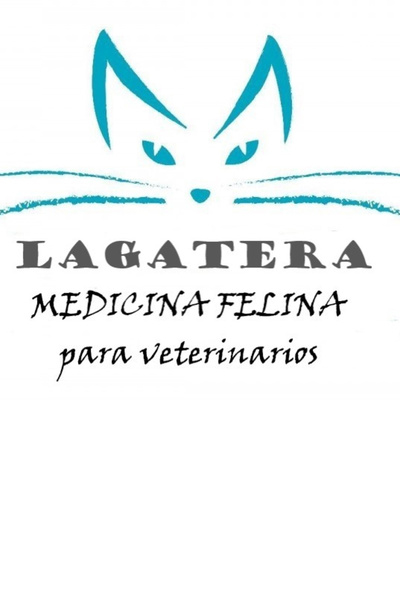
Entrevista en La Gatera: Medicina Felina Para Veterinario.
IODOCAT es el primer centro veterinario en España especializado en el diagnóstico y tratamiento del hipertiroidismo felino y Pilar Xifra Rubio, la responsable de este innovador proyecto. En esta primera parte de la entrevista Pilar nos habla de cómo concibió la idea y la puso en práctica, de su contribución como coautora en Feline Endocrinology (2019 Edward C. Feldman, Federico Fracassi, Mark E. Peterson, Ed Edra S.p.A.) y de los diferentes usos de la gammagrafía en medicina veterinaria.
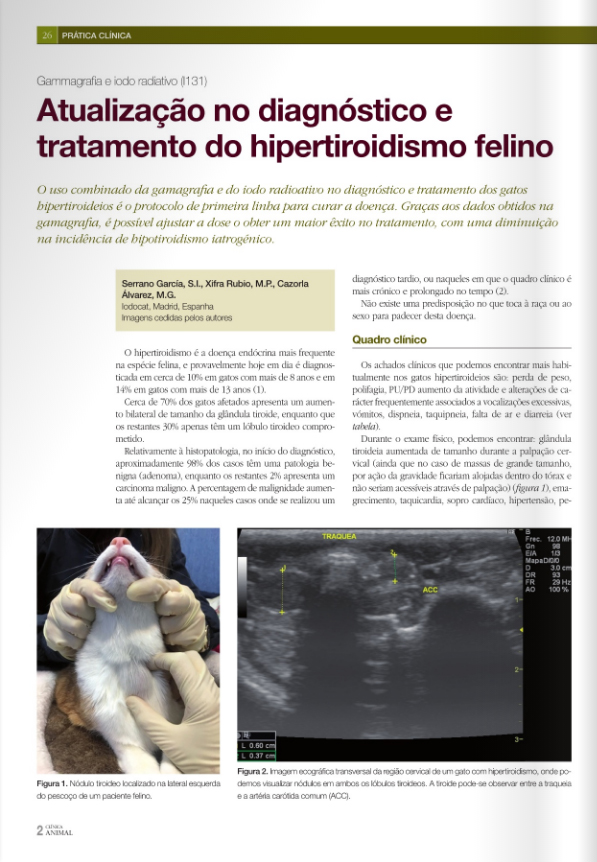
Publicación del artículo: "Actualização no diagnóstico e tratamento do hipertiroidismo felino”.
Clínica Animal 2019; 2:26-32
Serrano SI, Xifra MP, Cazorla M G.
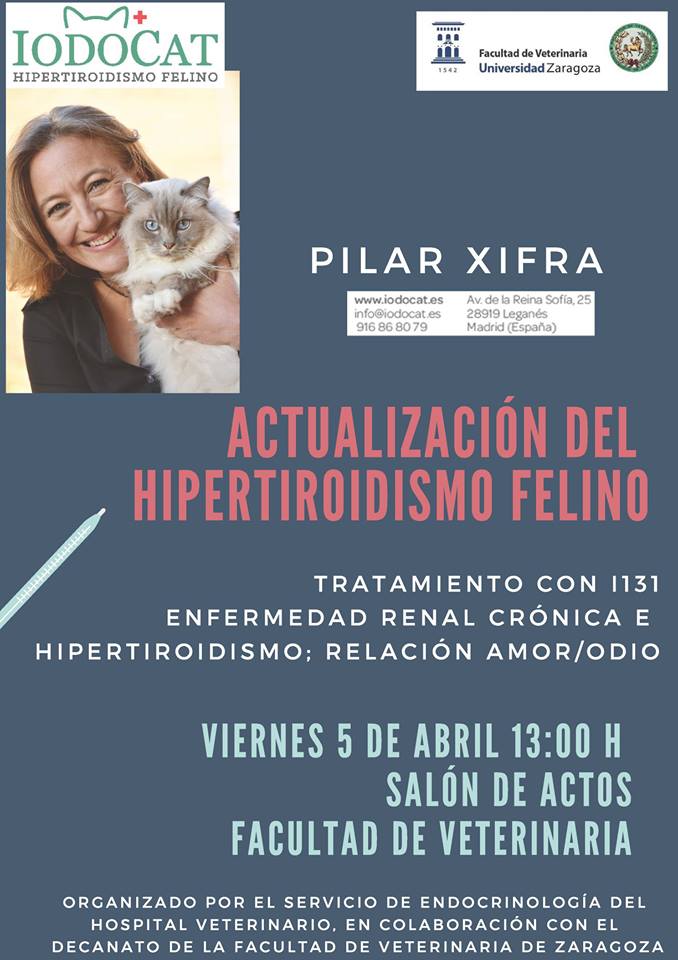
Seminario: Actualización del Hipertiroidismo felino:
“Tratamiento con yodo radiactivo"; "Enfermedad renal crónica e Hipertiroidismo; Relación amor/odio".
Organizado por el Servicio de Endocrinología del Hospital Veterinario
FACULTAD DE VETERINARIA DE ZARAGOZA Zaragoza (España).
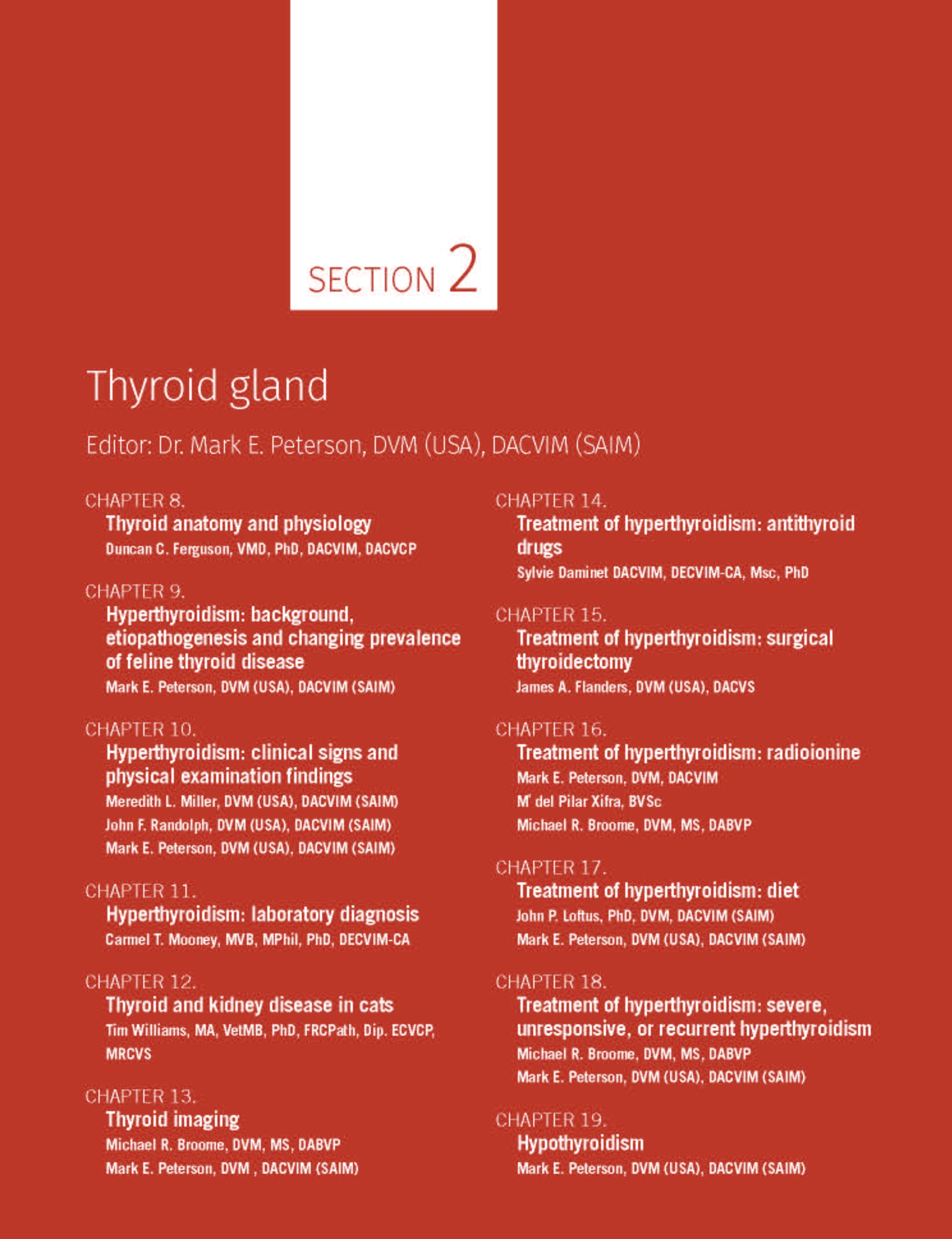
Coautor del capítulo “Treatment of hyperthyroidism: radioiodine”
En HANDBOOK OF FELINE ENDOCRINOLOGY. Feldman EC, Fracassi F, Peterson ME (eds). Milan, EDRA, 2019; 227-254.
Peterson ME, Xifra MP. Broome MR.
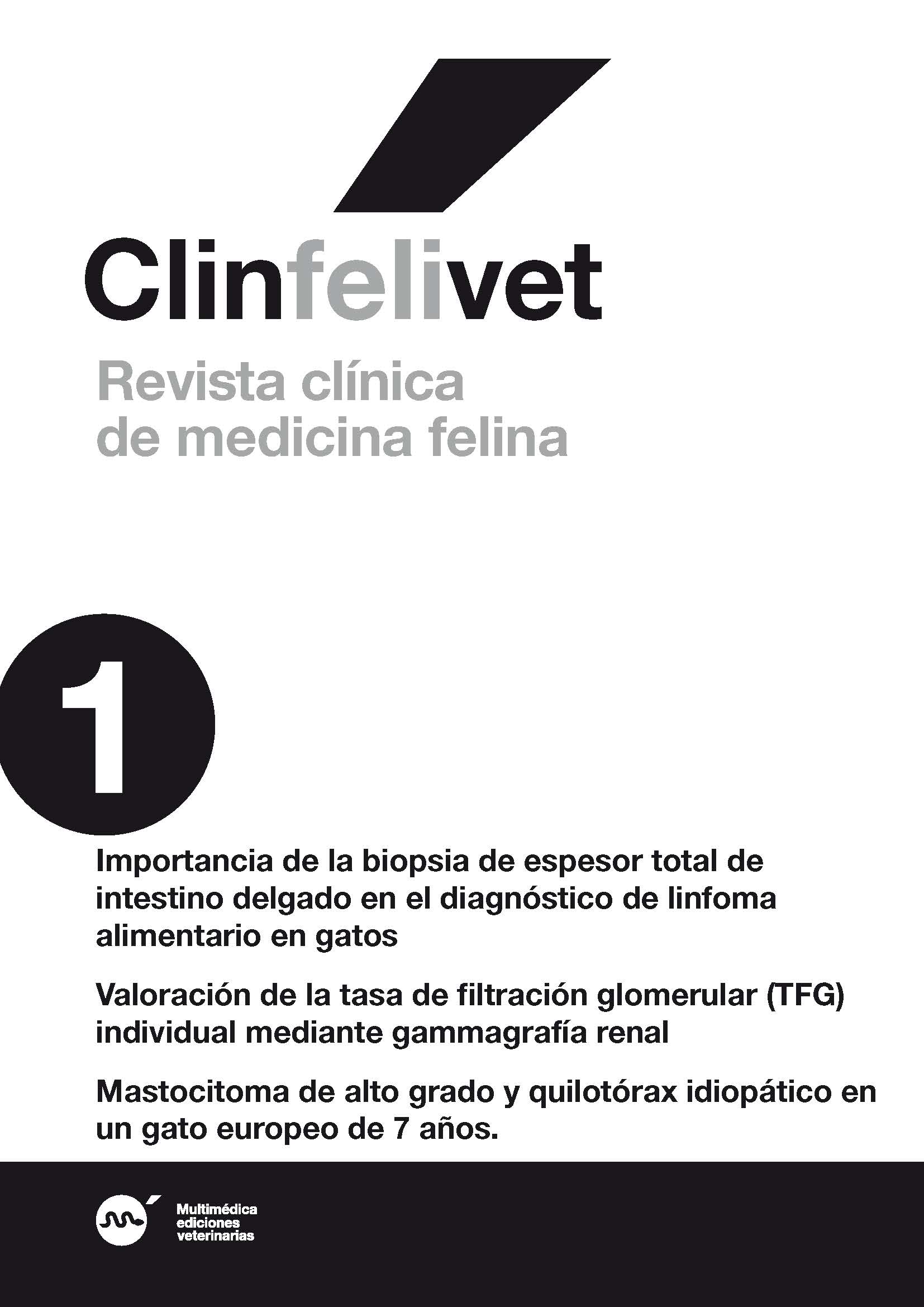
Publicación del artículo: "Valoración de la tasa de filtración glomerular (TFG) individual mediante gammagrafía renal; a propósito de un caso clínico".
Clinfelivet 2019; 1:13-17
Serrano SI, Xifra MP, Salguero R, Broome

Webminar: “Hipertiroidismo felino y enfermedad renal crónica”,
En el curso “General Practitioner Certificate in Feline Practice”,
Organizado por IMPROVE INTERNACIONAL.

Publicación del artículo: "Actualización en el diagnóstico y tratamiento del hipertiroidismo felino”.
Argos 2018; 201:68-73
Serrano SI, Xifra MP, Cazorla M G.
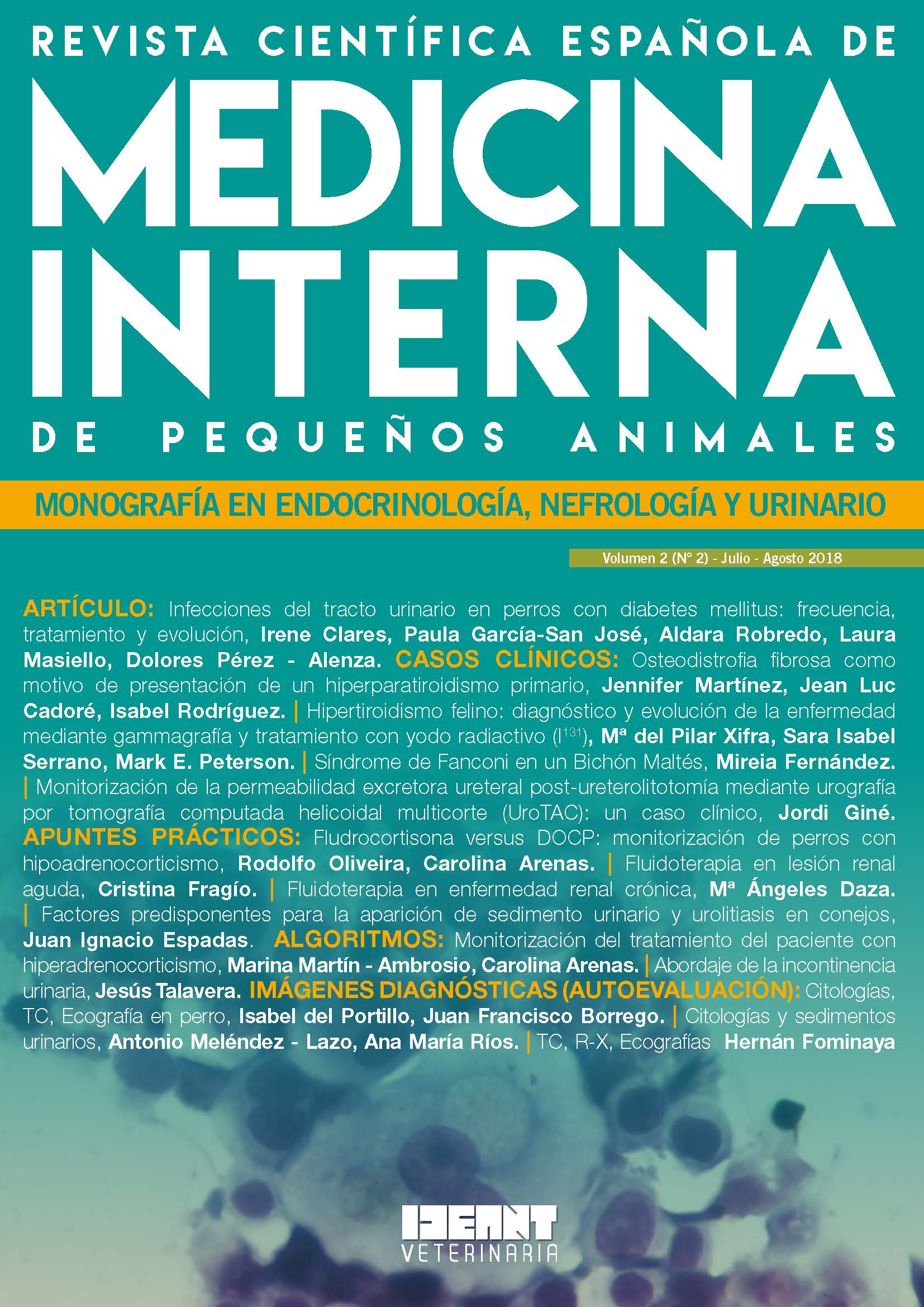
Publicación del artículo: “Hipertiroidismo felino: diagnóstico y evolución de la enfermedad mediante gammagrafía y tratamiento con yodo radiactivo (I131).
Medicina Interna Práctica de Pequeños Animales 2018; 2:25-31.
Xifra MP, Serrano SI, Peterson ME

Publicación: "Entrevista a la Dra. Xifra, colaboradora de la obra Manual de endocrinología de pequeños animales".
Clinoncovet 2018; 11:30-31.
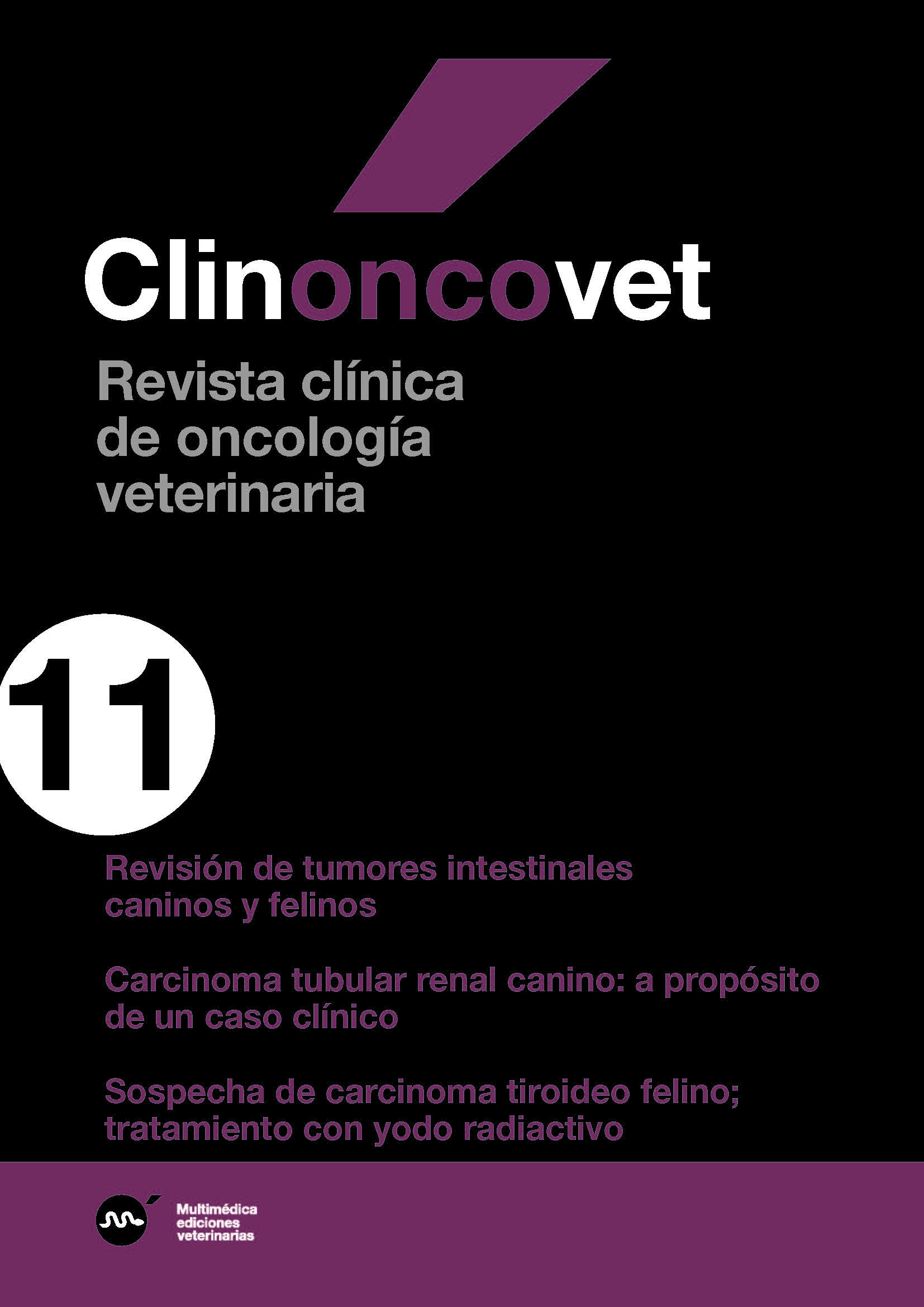
Publicación del artículo: “Sospecha de carcinoma tiroideo felino: tratamiento con yodo radiactivo”.
Clinoncovet 2018; 11:20-29.
Xifra MP, Serrano SI, Peterson ME
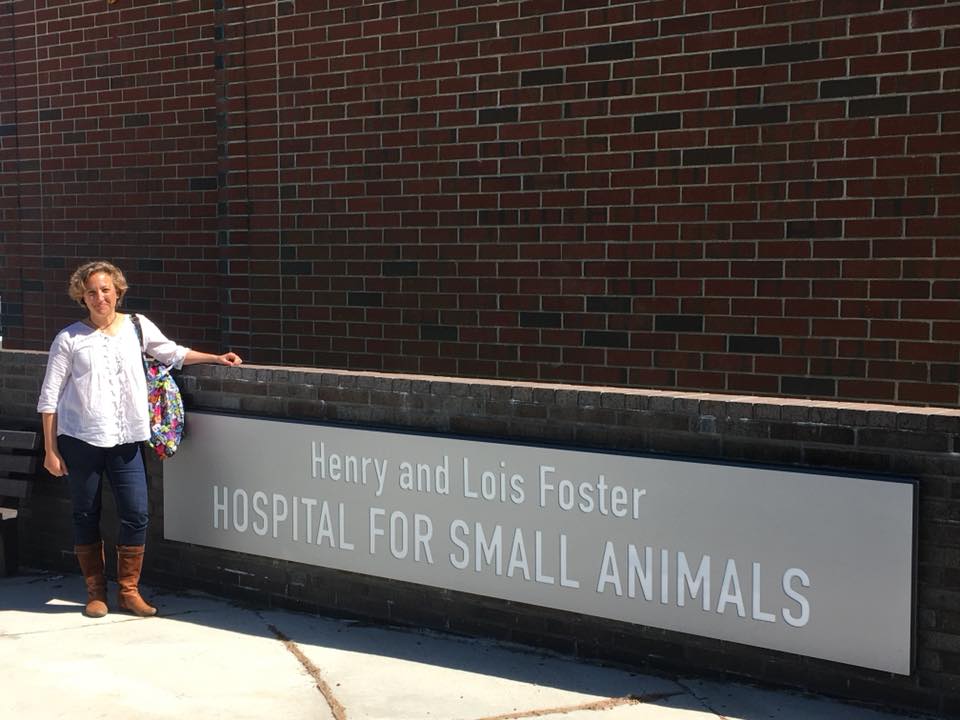
Visita al Cummings Veterinary Medical Center de la Universidad de Tufts, con la Dra. Lisa M. Freeman, para perfeccionar los conocimientos en ecografía muscular. Boston (Estados Unidos)
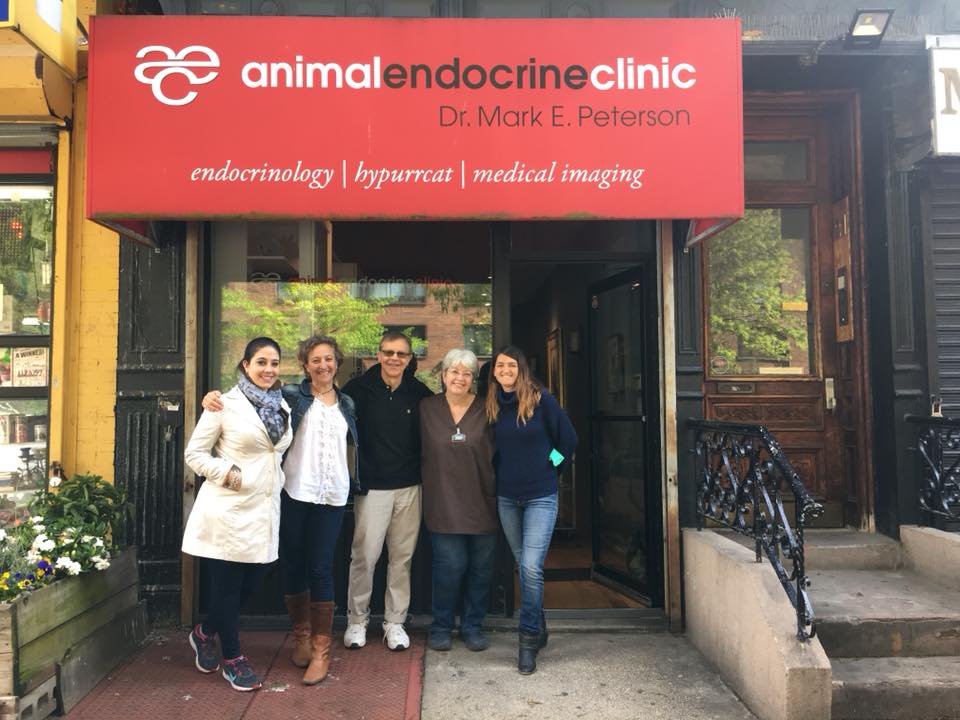
Estancia en el Animal Endocrine Clinic de Nueva York con el Dr. Mark E. Peterson
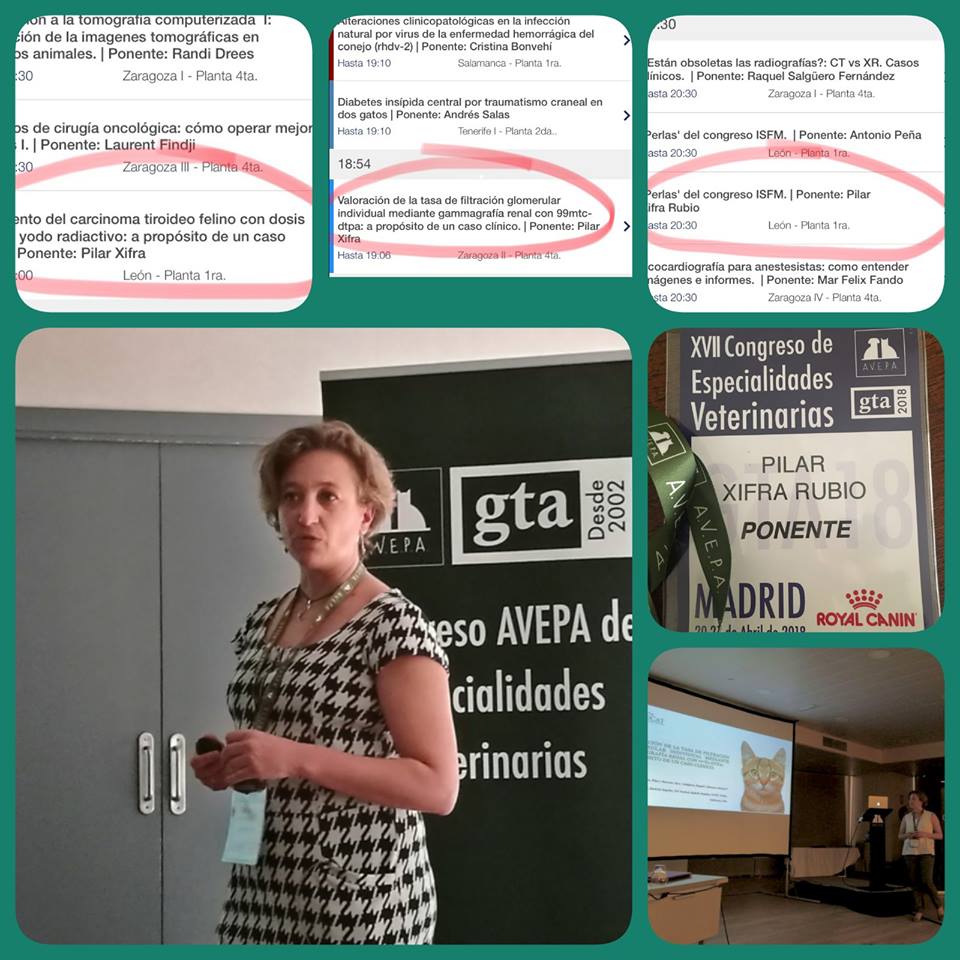
Presentación de las comunicaciones libres “Tratamiento con yodo radiactivo del carcinoma tiroideo felino” y “Gammagrafía renal”,
XVII CONGRESO DE ESPECIALIDADES VETERINARIAS GTA-AVEPA
Madrid (España).

Coautora de dos capítulos: “Hipertiroidismo y tumores tiroideos en el perro” e “Hipertiroidismo felino”
En el MANUAL DE ENDOCRINOLOGÍA DE PEQUEÑOS ANIMALES, 2ª Ed., 2018: 127-92.
Xifra MP, Peterson ME

Seminarios: “Diagnóstico del hipertiroidismo felino, ¡Búscalo!” y “Tratamiento con yodo radiactivo: candidatos y procedimiento”.
Organizado por HENRY SCHEIN.
Madrid (España).
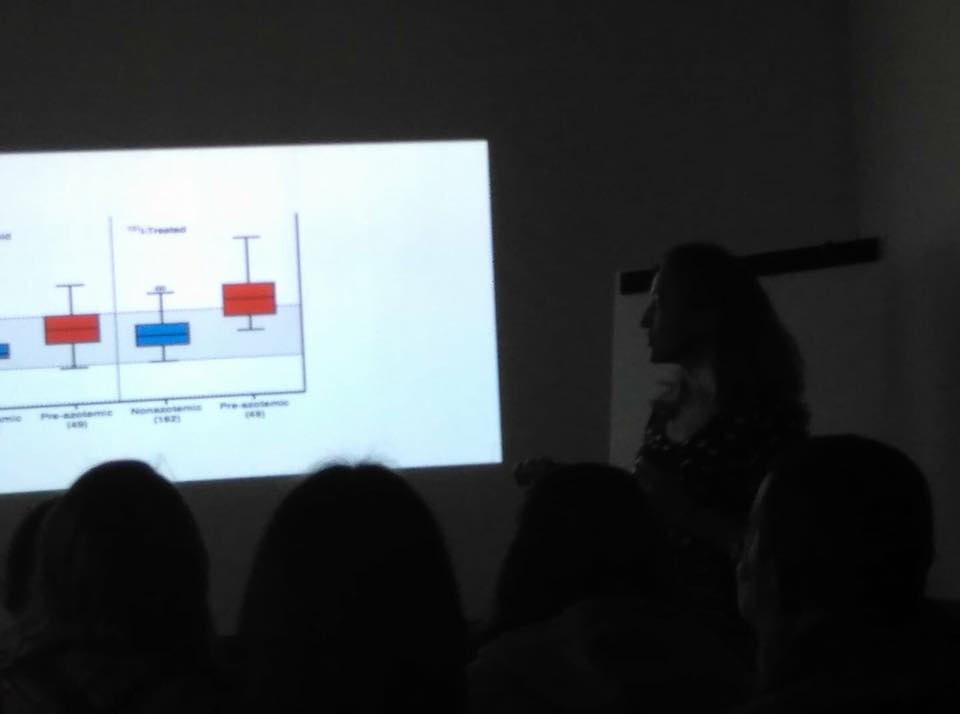
Seminario “Hipertiroidismo y enfermedad renal crónica: una relación amor-odio”
Organizado por la Hospital Veterinario Mediterráneo - IDEXX Laboratorios
Madrid (España).
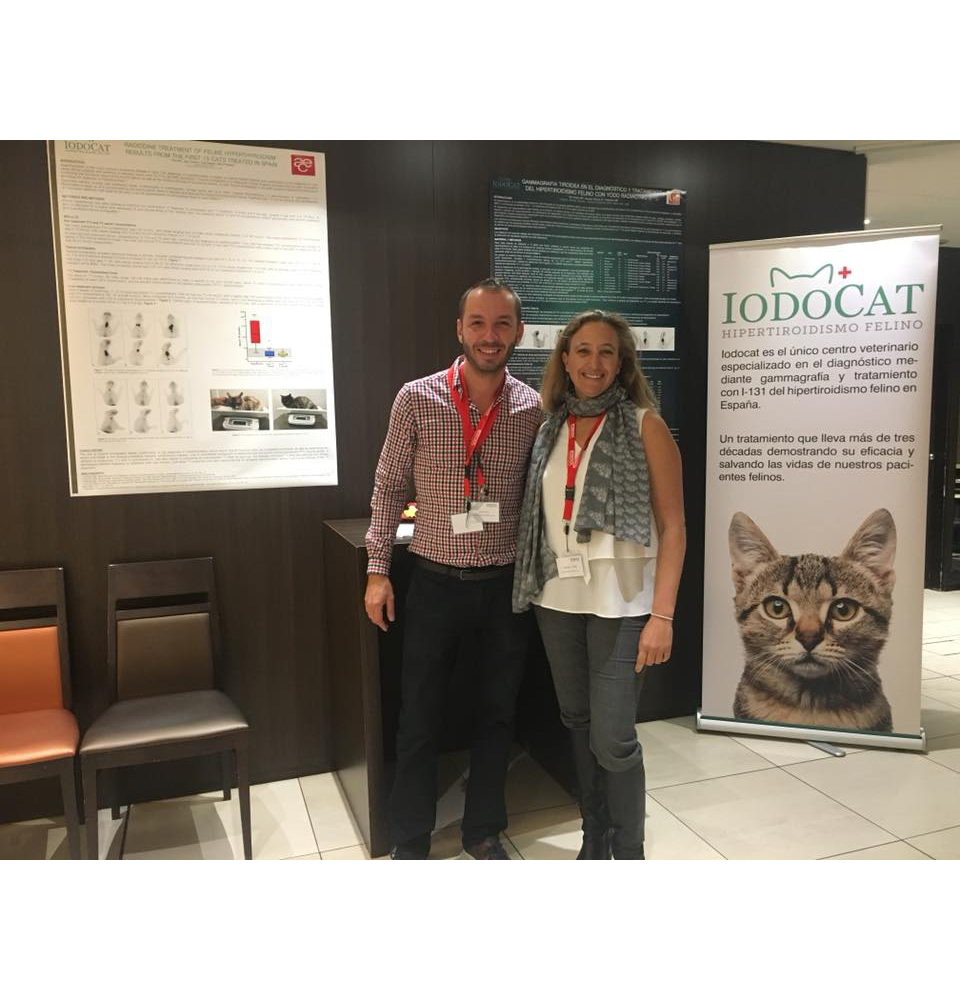
Presentación de IODOCAT: Servicio Integral de Diagnóstico y Tratamiento con yodo radiactivo del Hipertiroidismo Felino.
III Simposio de Medicina Interna organizado por IDEXX LABORATORIOS
Madrid (España).
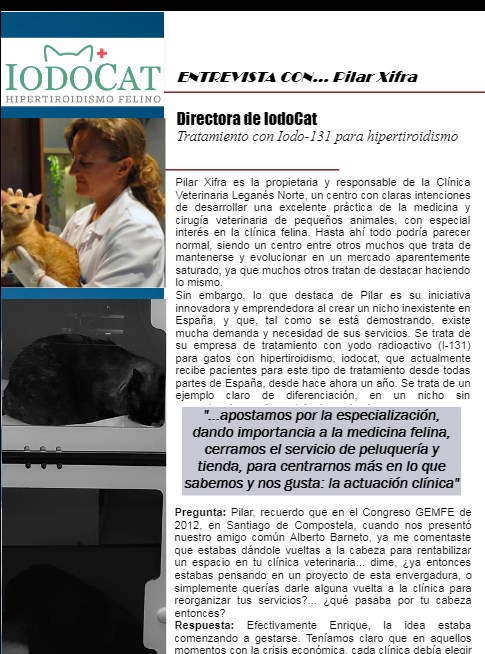
Entrevista en la revista digital VETSPOWER: Pilar Xifra, Directora de IODOCAT.
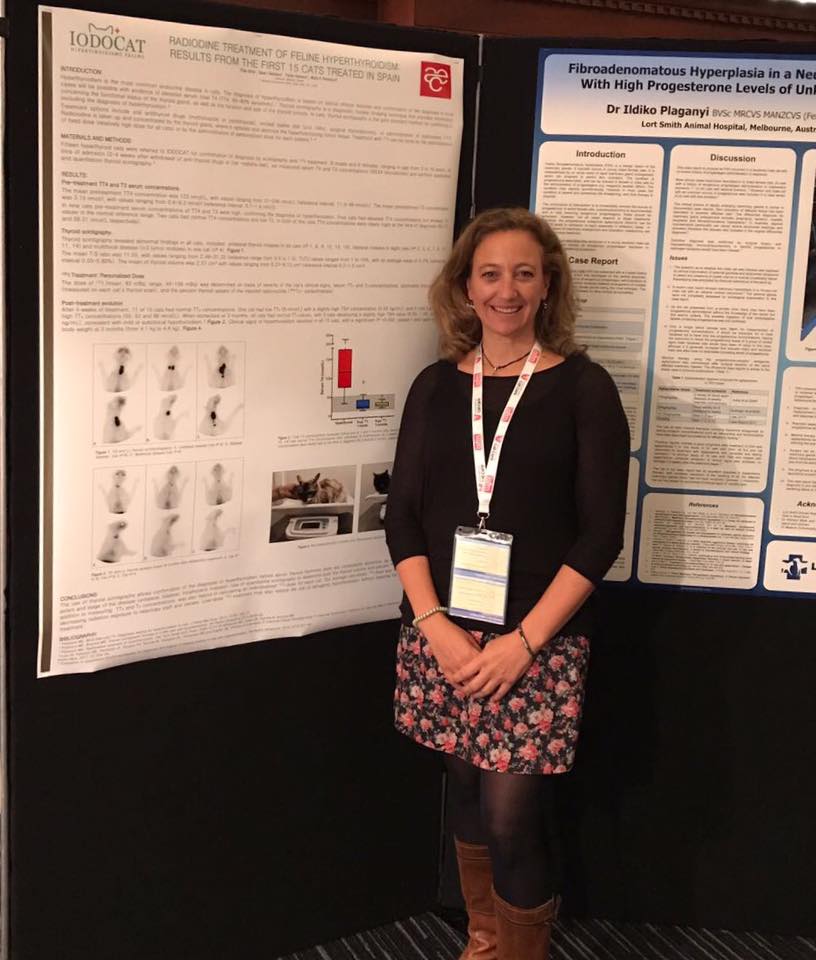
Presentación del póster “Radioidine treatment of feline hyperthyroidism: results from the first 15 cats treated in Spain".
ISFM WORLD FELINE CONGRESS 2017
Brighton (UK )
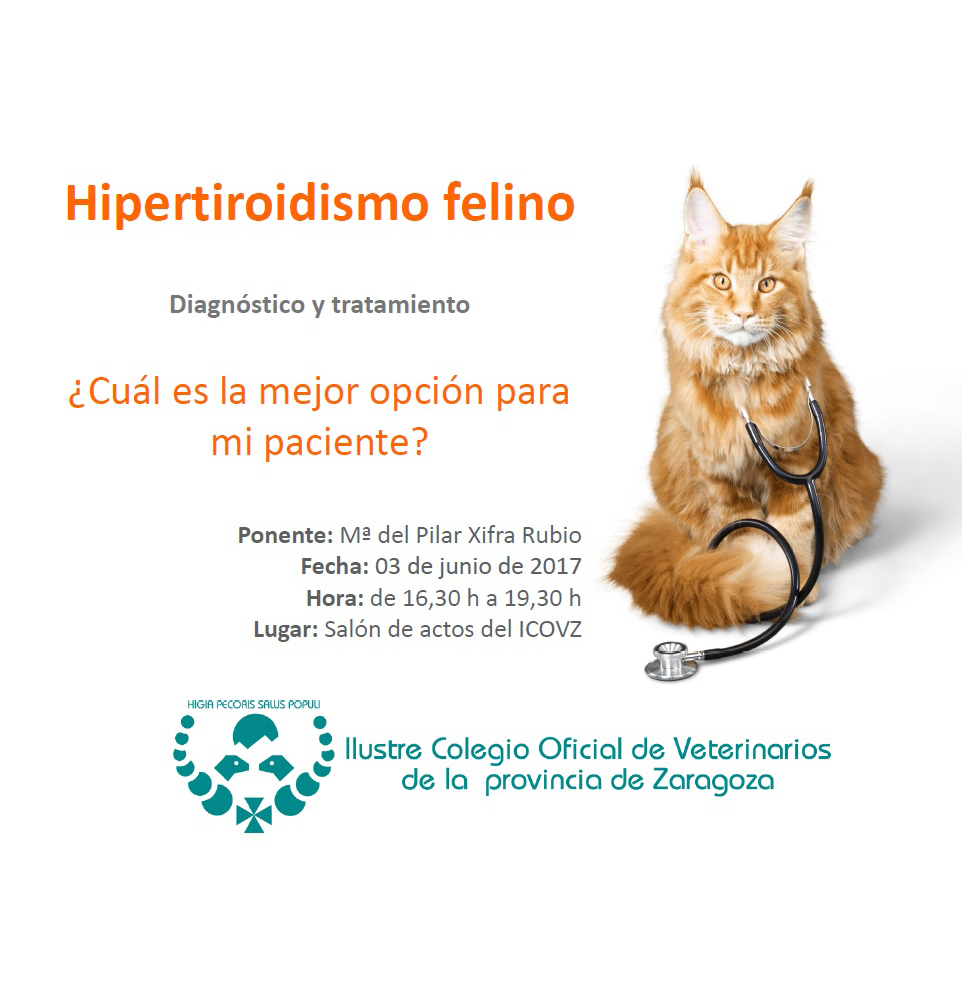
Seminario: “Hipertiroidismo felino: Diagnóstico y tratamiento ¿Cuál es la mejor opción para mi paciente?”
Organizado por el ILUSTRE COLEGIO OFICIAL DE VETERINARIOS DE ZARAGOZA.
Zaragoza (España).
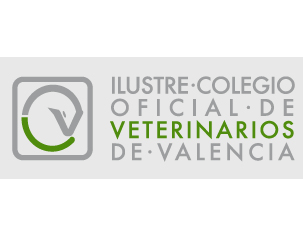
Seminario: "Hipertiroidismo felino: diagnóstico y tratamiento”
Organizado por el GRUPO GEMFE (AVEPA)
ILUSTRE COLEGIO DE VETERINARIOS DE VALENCIA (Valencia, España).

Curso de Hipertiroidismo Felino “Diagnóstico del hipertiroidismo felino”; “Tratamiento del hipertiroidismo felino”; “Tratamiento con I131 del hipertiroidismo felino”; “Casos clínicos”.
Organizado GRUPO GEMFE (AVEPA).
ILUSTRE COLEGIO OFICIAL DE VETERINARIOS DE BIZKAIA. (Bilbao, España).
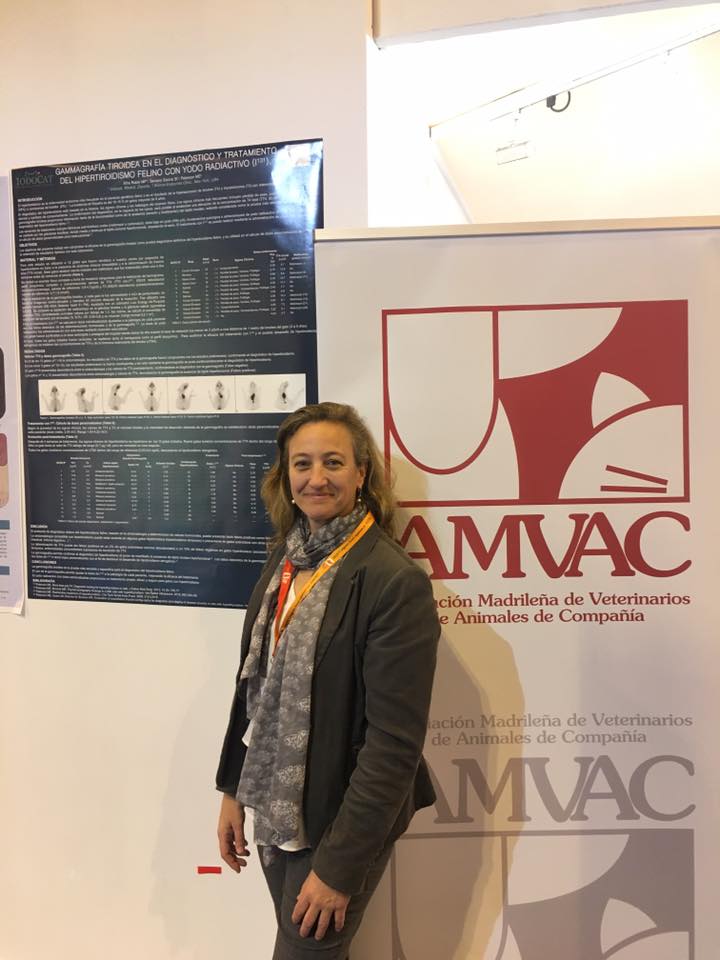
Presentación del póster “Gammagrafía tiroidea en el diagnóstico y tratamiento del hipertiroidismo felino con yodo radiactivo”
XXXIV CONGRESO ANUAL DE AMVAC VETMADRID 2017
Madrid (España)
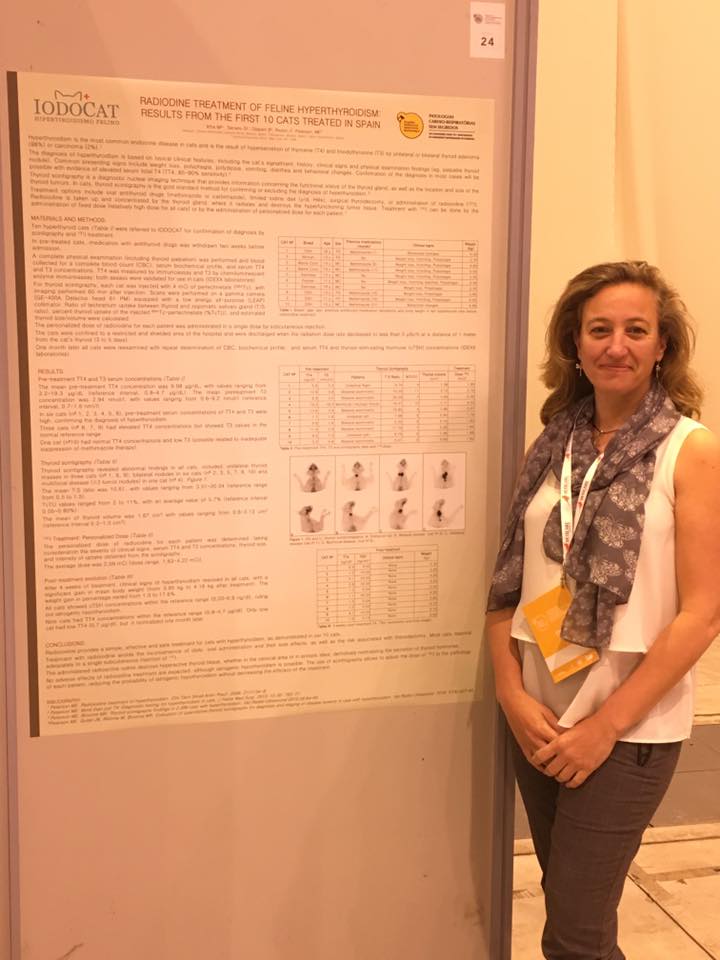
Presentación del póster “Radiodine treatment of feline hyperthyroidism: results from the first 10 cats treated in Spain”
XIII CONGRESO DEL HOSPITAL VETERINARIO MONTENEGRO
Oporto (Portugal).
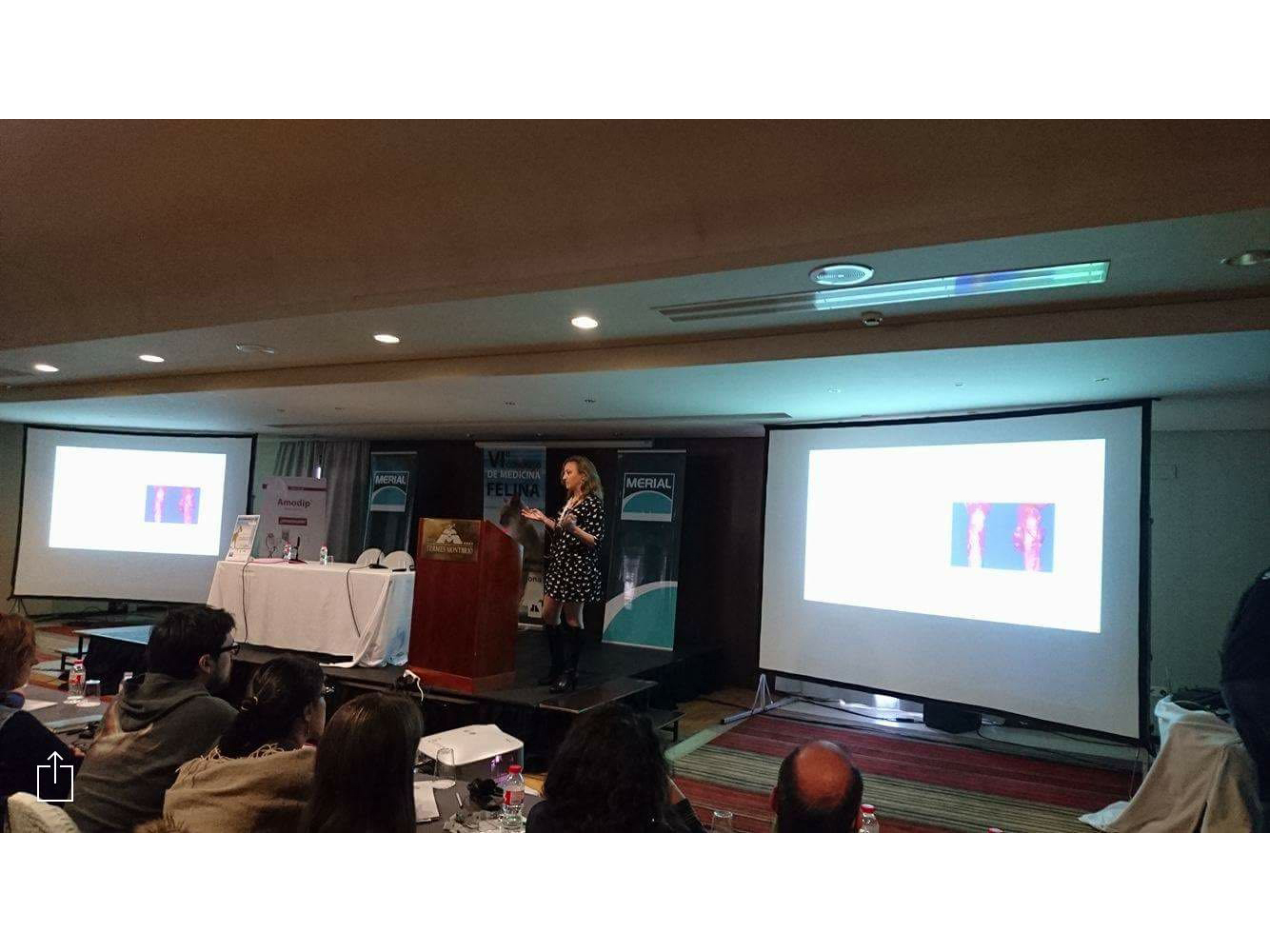
Presentación de IODOCAT: Servicio Integral de Diagnóstico y Tratamiento con yodo radioactivo del Hipertiroidismo Felino.
VI CONGRESO DE MEDICINA FELINA, organizado por GRUPO GEMFE (AVEPA)
Tarragona (España)
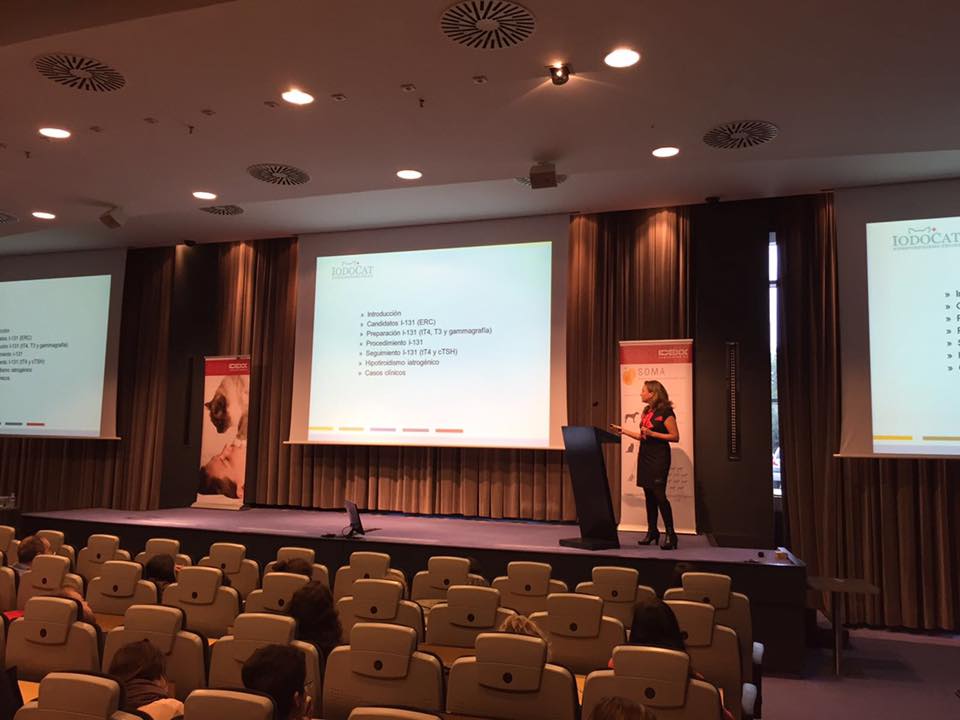
Seminario: “Parámetros analíticos de interés en el tratamiento del hipertiroidismo felino con yodo radiactivo”,
II Simposio de Medicina Interna, organizado por IDEXX LABORATORIOS
Barcelona (España).
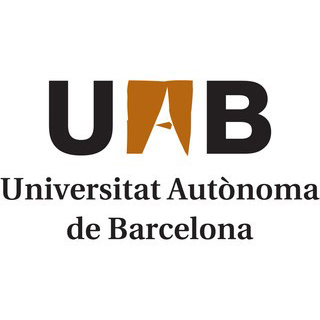
Seminario: "Hipertiroidismo felino: diagnóstico y tratamiento”,
Organizado por el GRUPO GEMFE (AVEPA),
Universidad Autónoma de Barcelona (España).
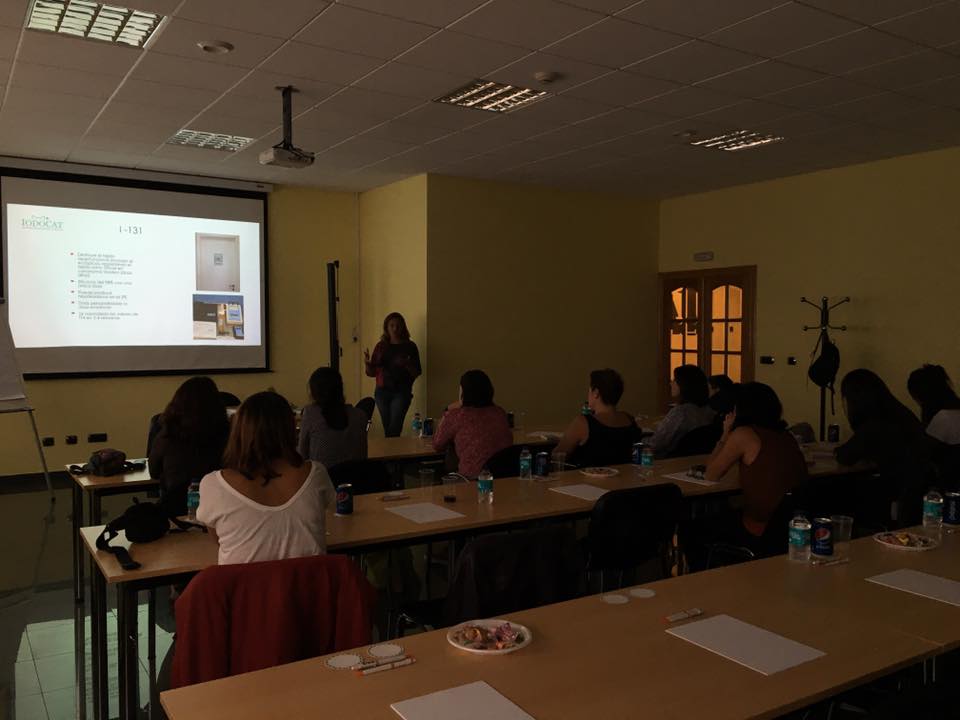
Seminario: “Presentación del servicio de tratamiento con yodo radiactivo del hipertiroidismo felino (IODOCAT)”,
Organizado GRUPO GEMFE (AVEPA)
Lugo (España).
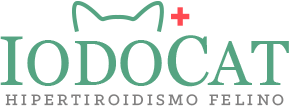
Inauguración de IODOCAT: Servicio Integral de Diagnóstico y Tratamiento con yodo radiactivo del Hipertiroidismo Felino.
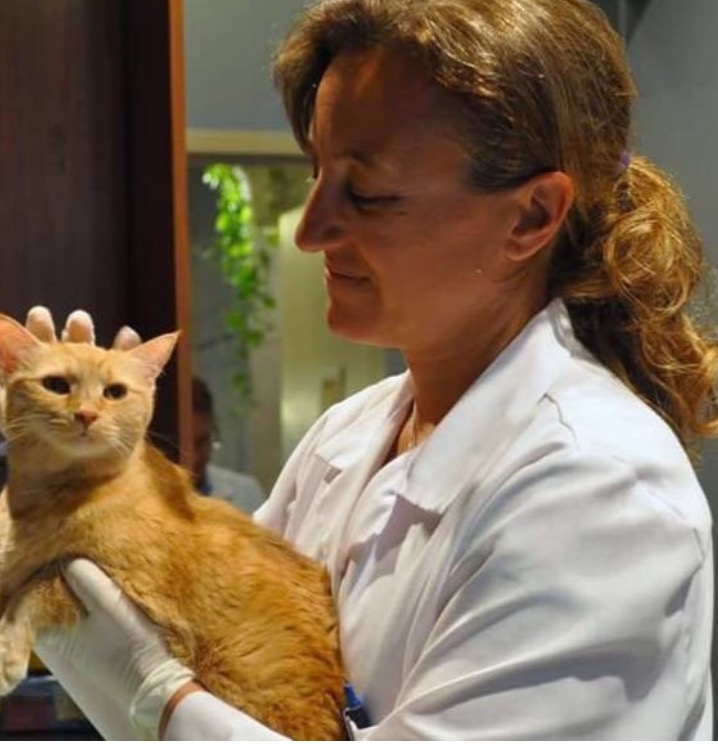
Estancia en el Animal Endocrine Clinic de Nueva York con el Dr. Mark E. Peterson.
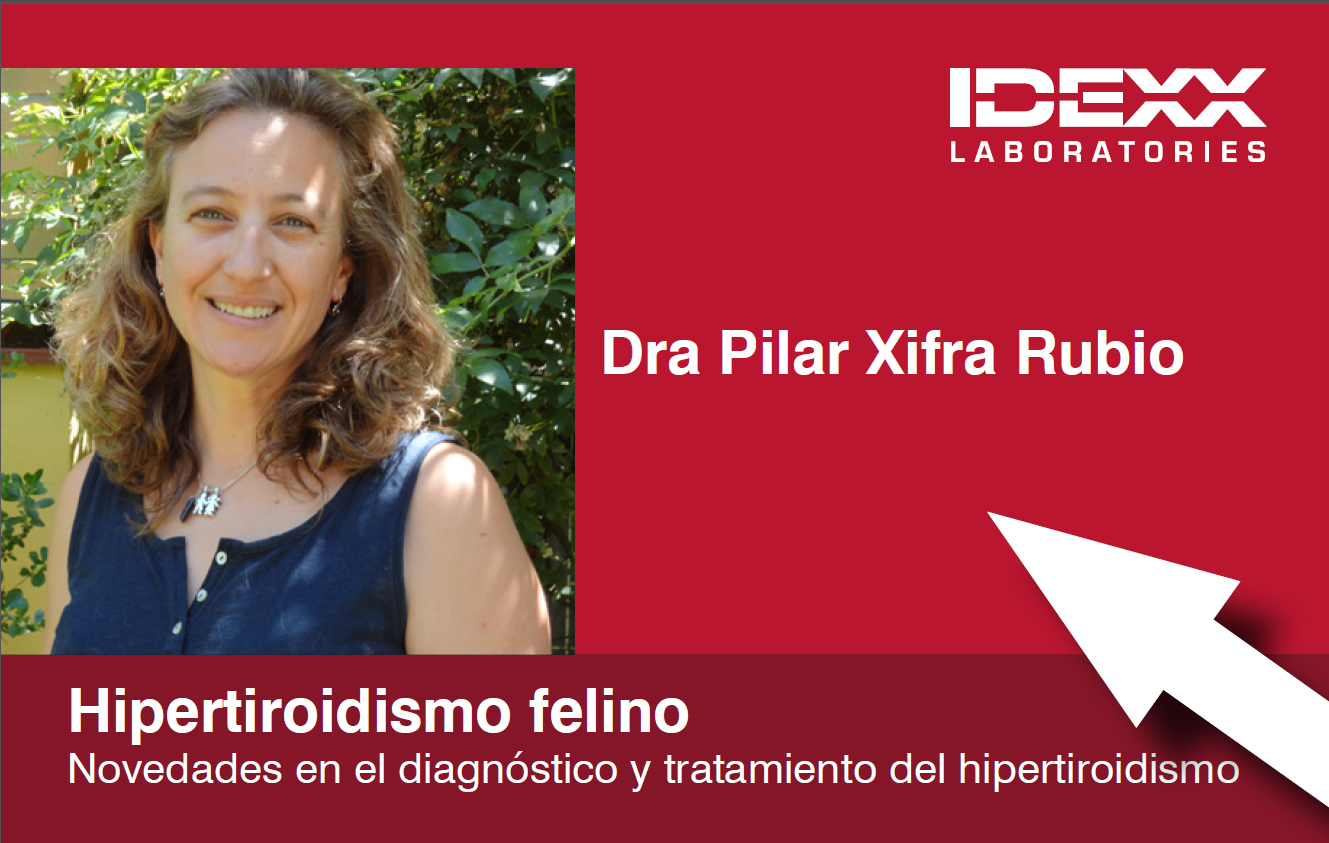
Webminar: “Novedades en el diagnóstico y tratamiento del hipertiroidismo felino”
En el CURSO ON-LINE DE ENDOCRINOLOGÍA, organizado por IDEXX LABORATORIOS.
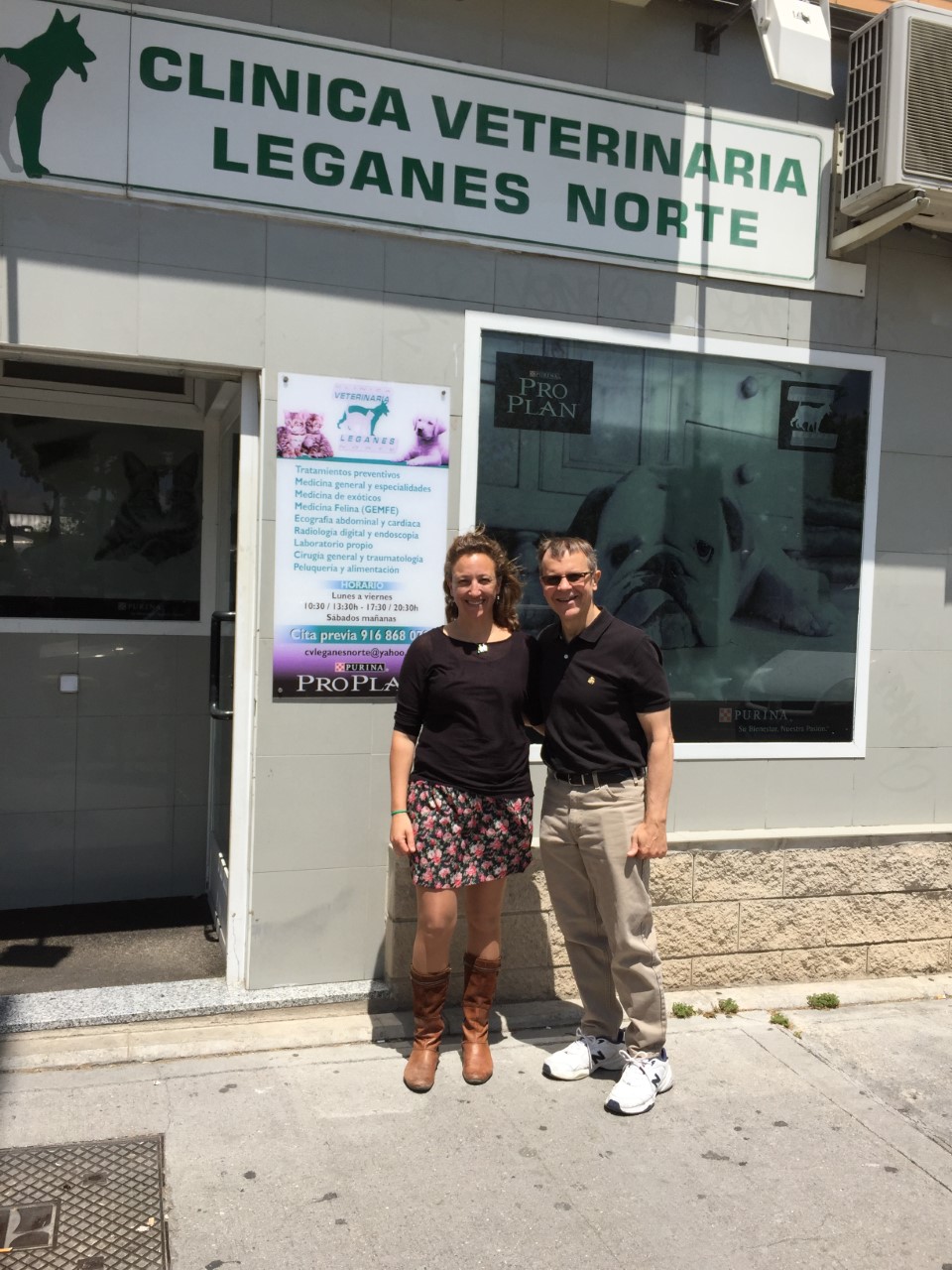
Visita del Dr. ME Peterson para supervisar las instalaciones y protocolos de IODOCAT

Estancia en el Animal Endocrine Clinic de Nueva York con el Dr. Mark E. Peterson.
Contact Us


Veterinary Clinic Leganés norte
info@iodocat.es+34 636 028 008
Av. de la Reina Sofía, 25 28919 Leganés Madrid (Spain)
View on Google Maps
